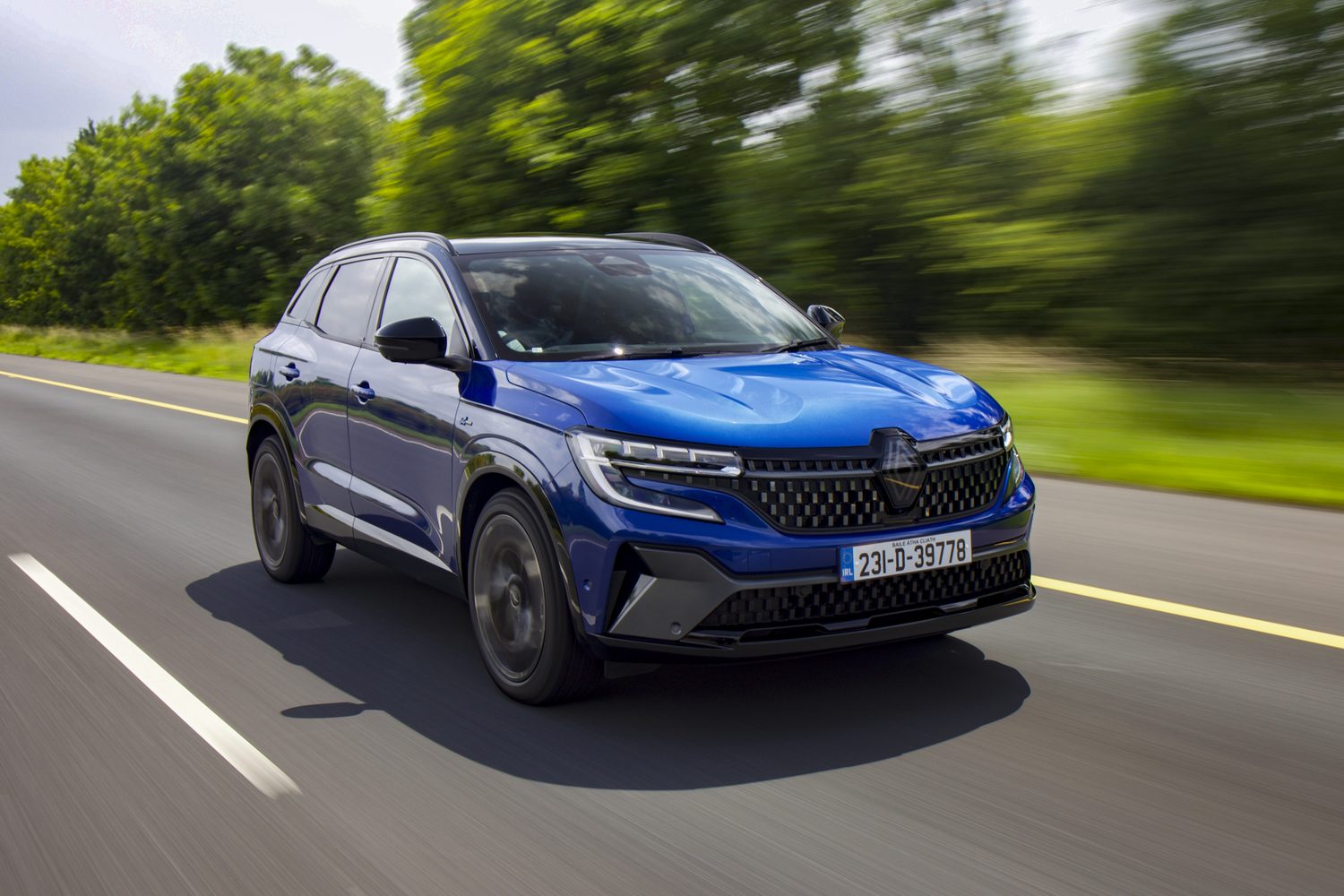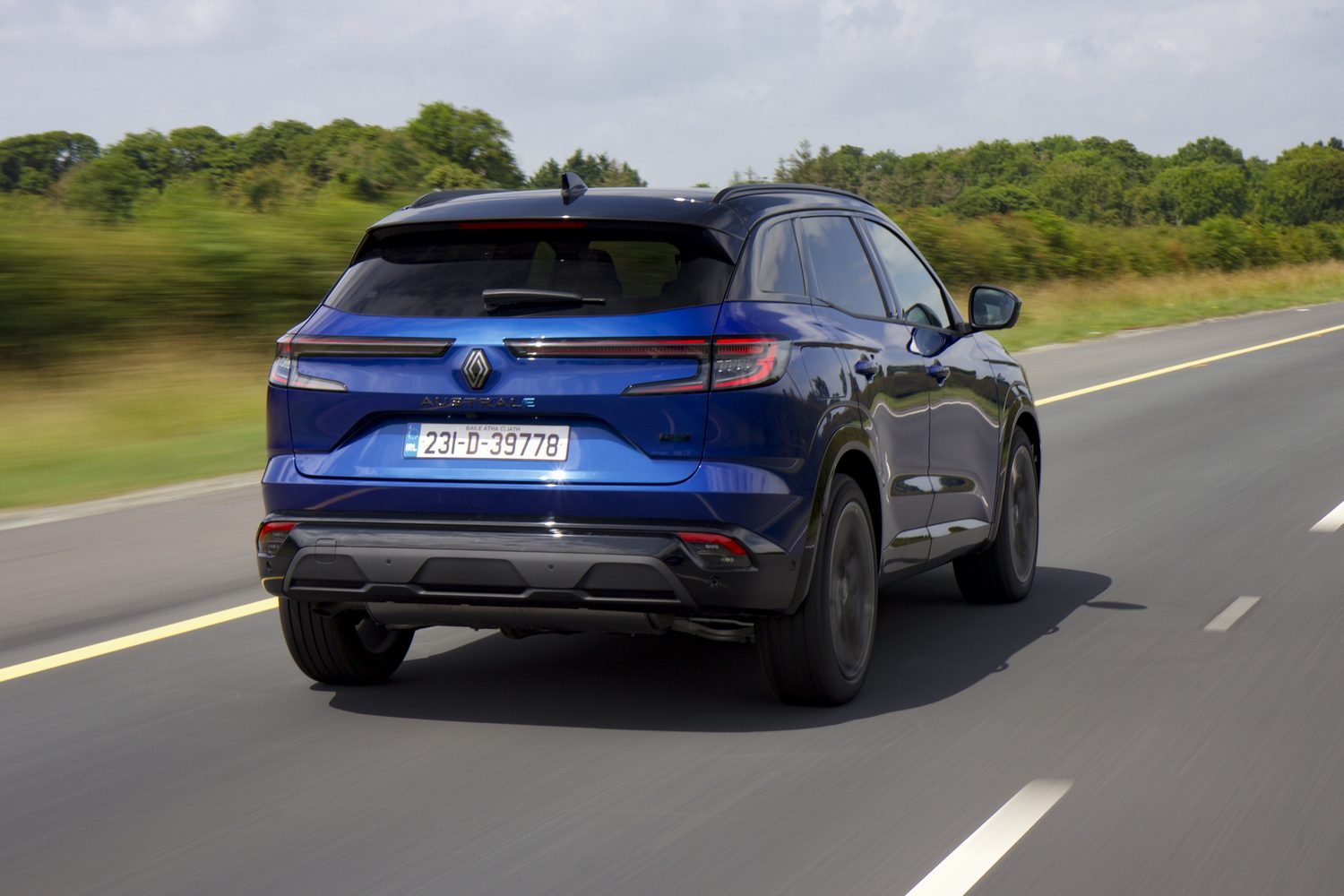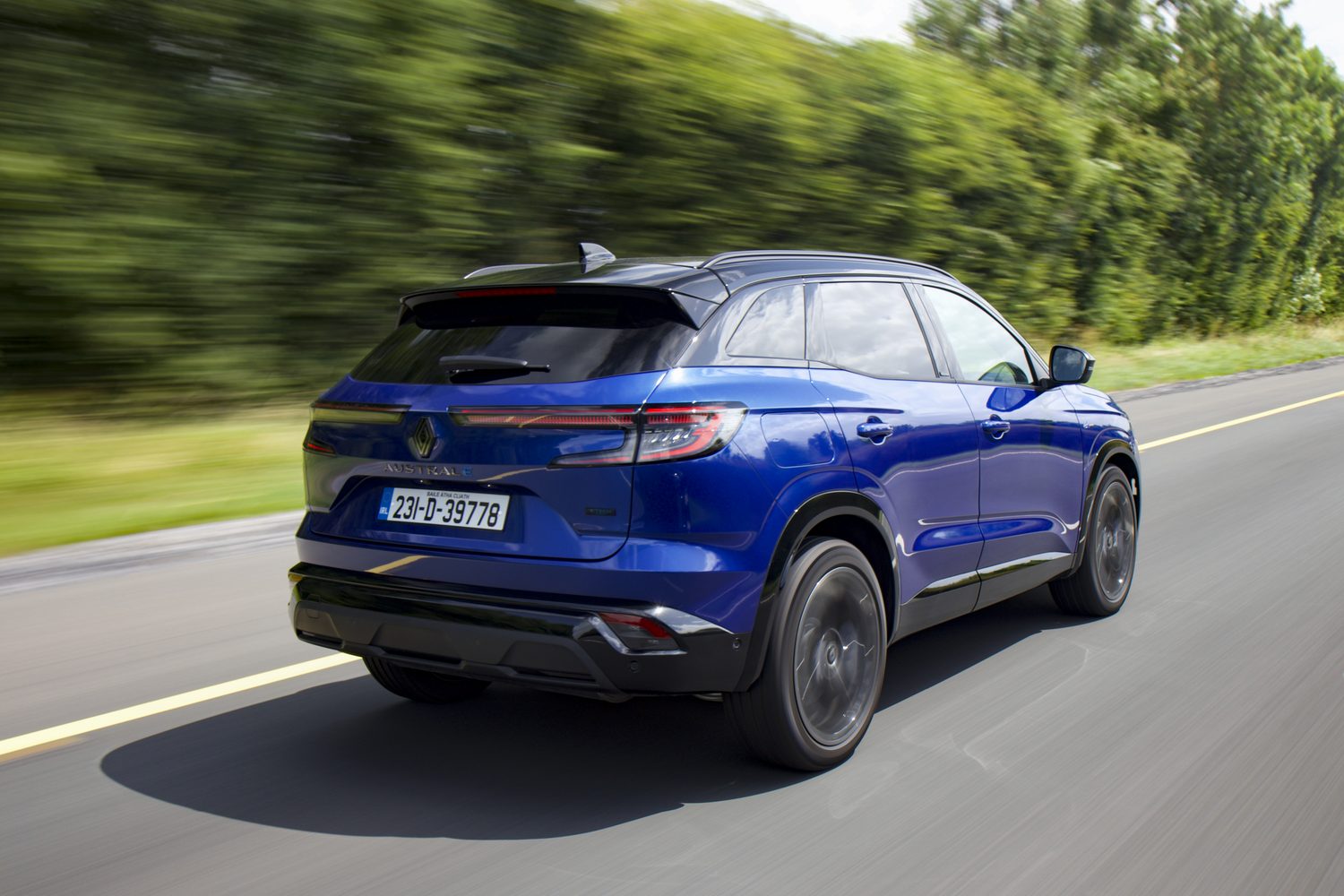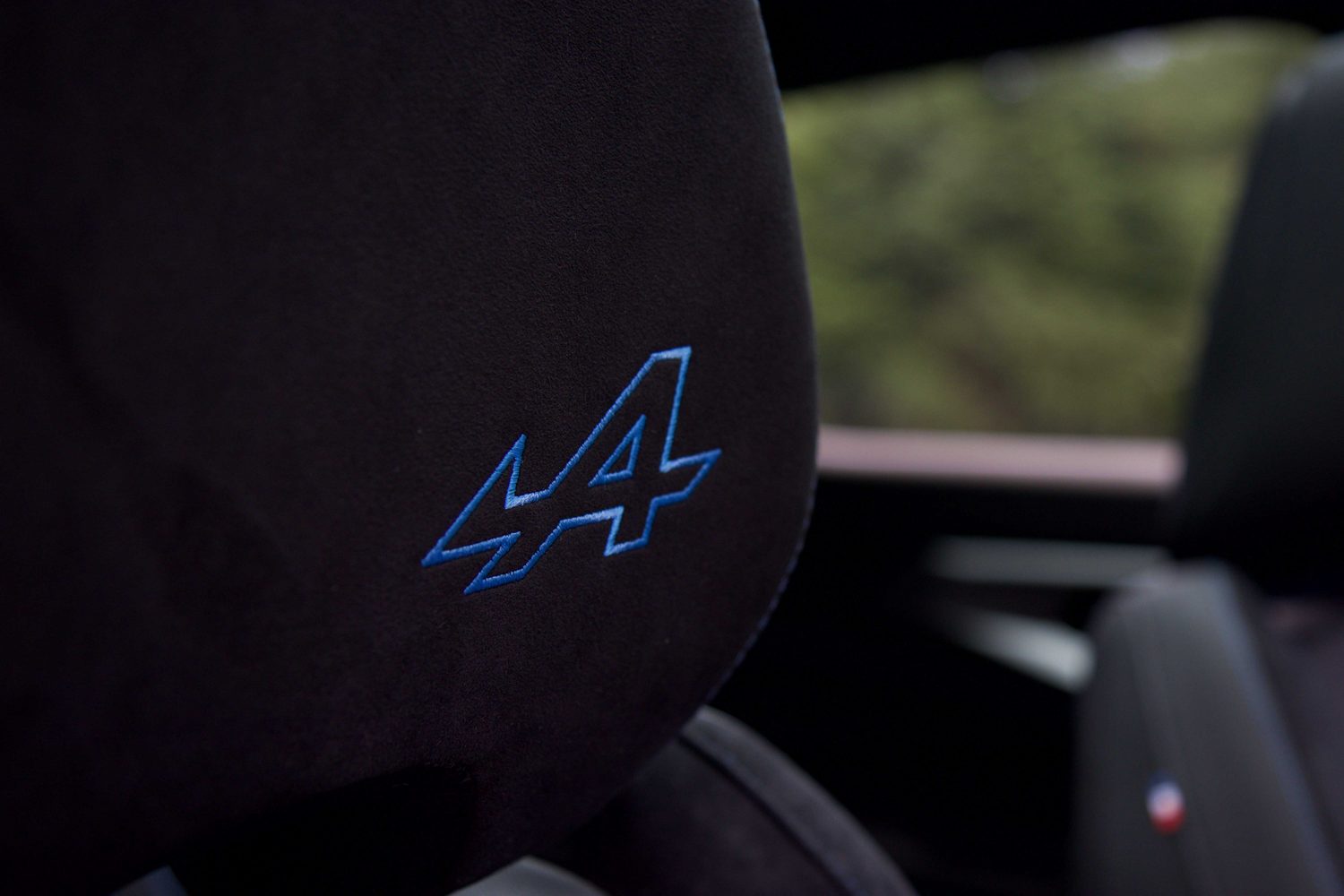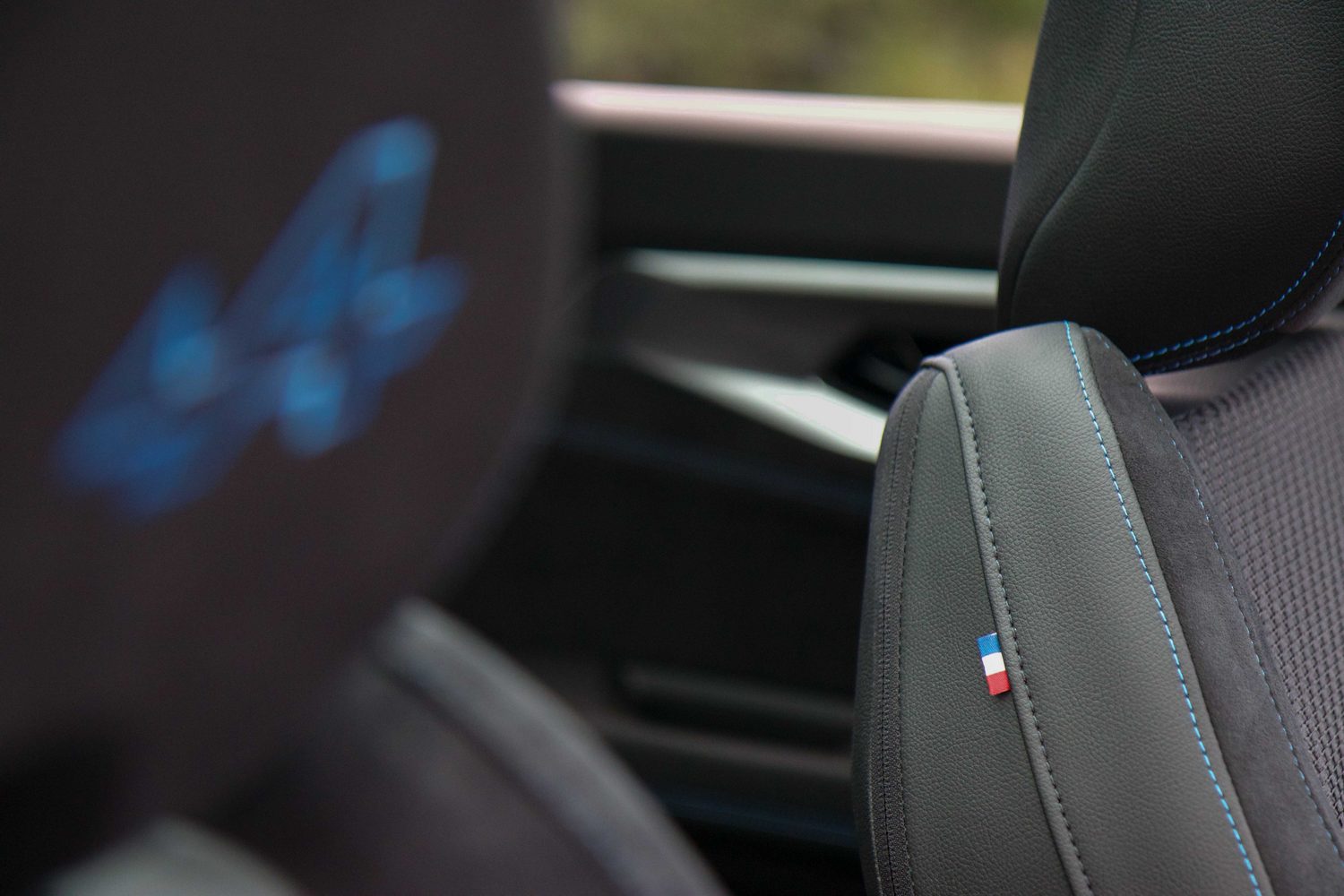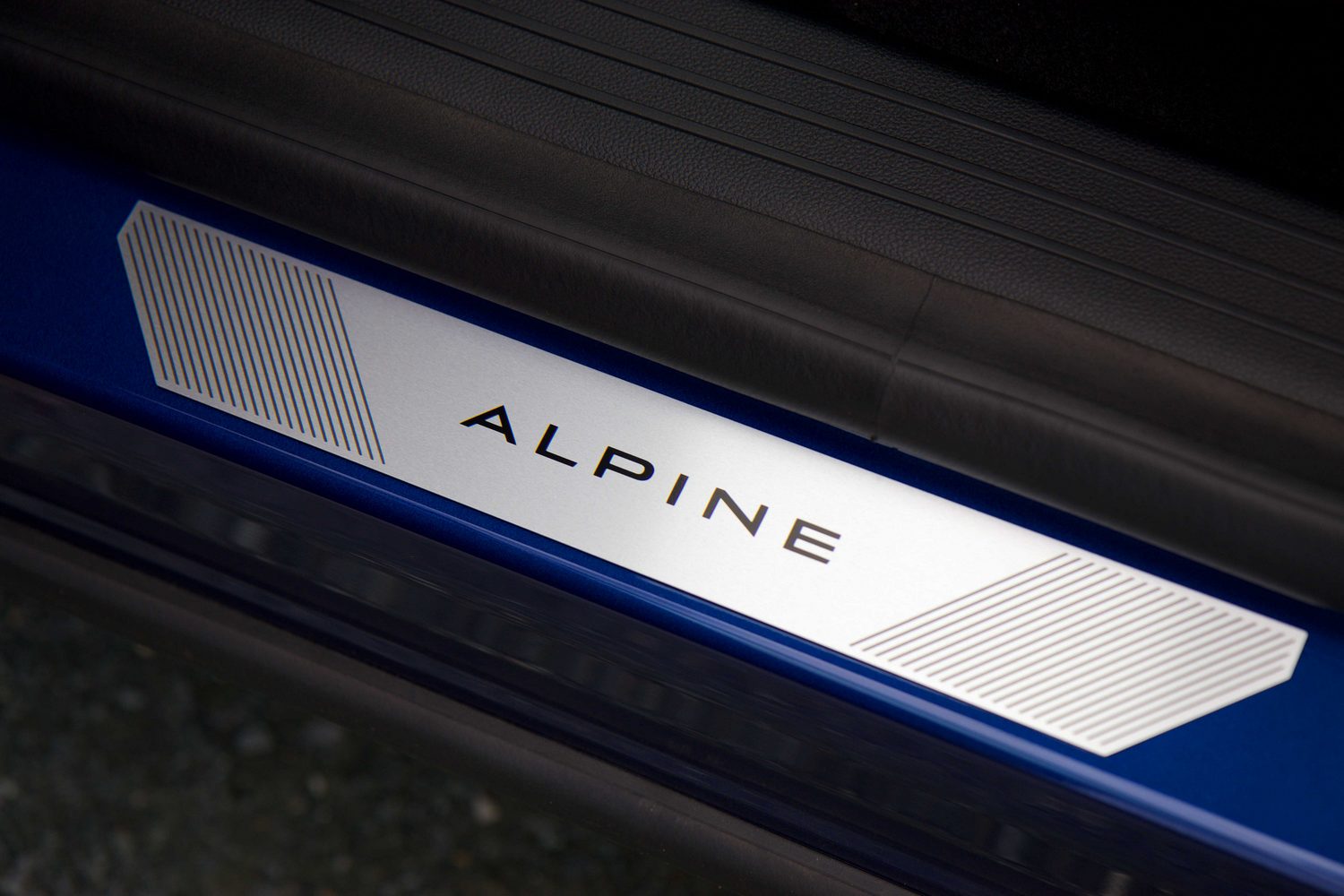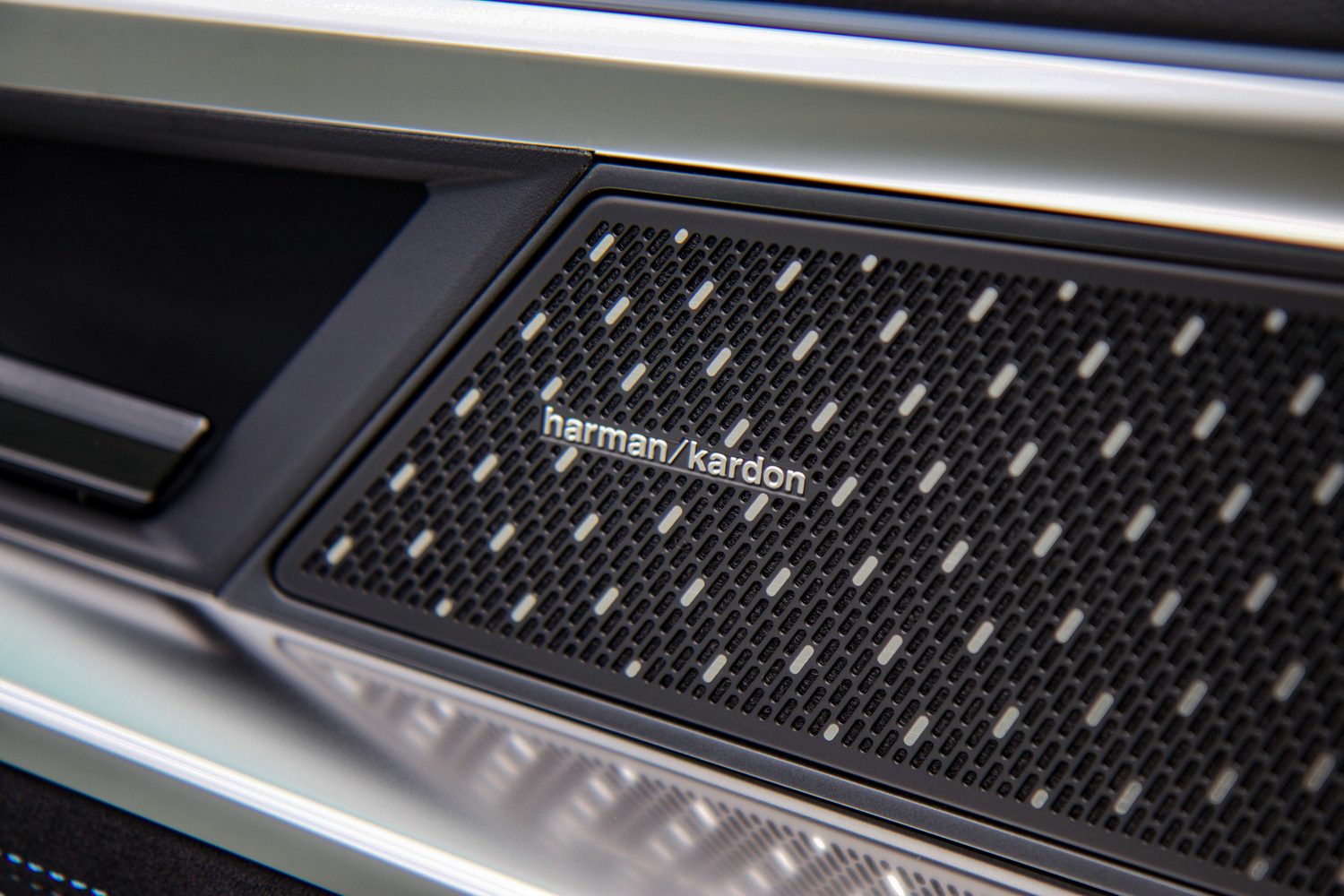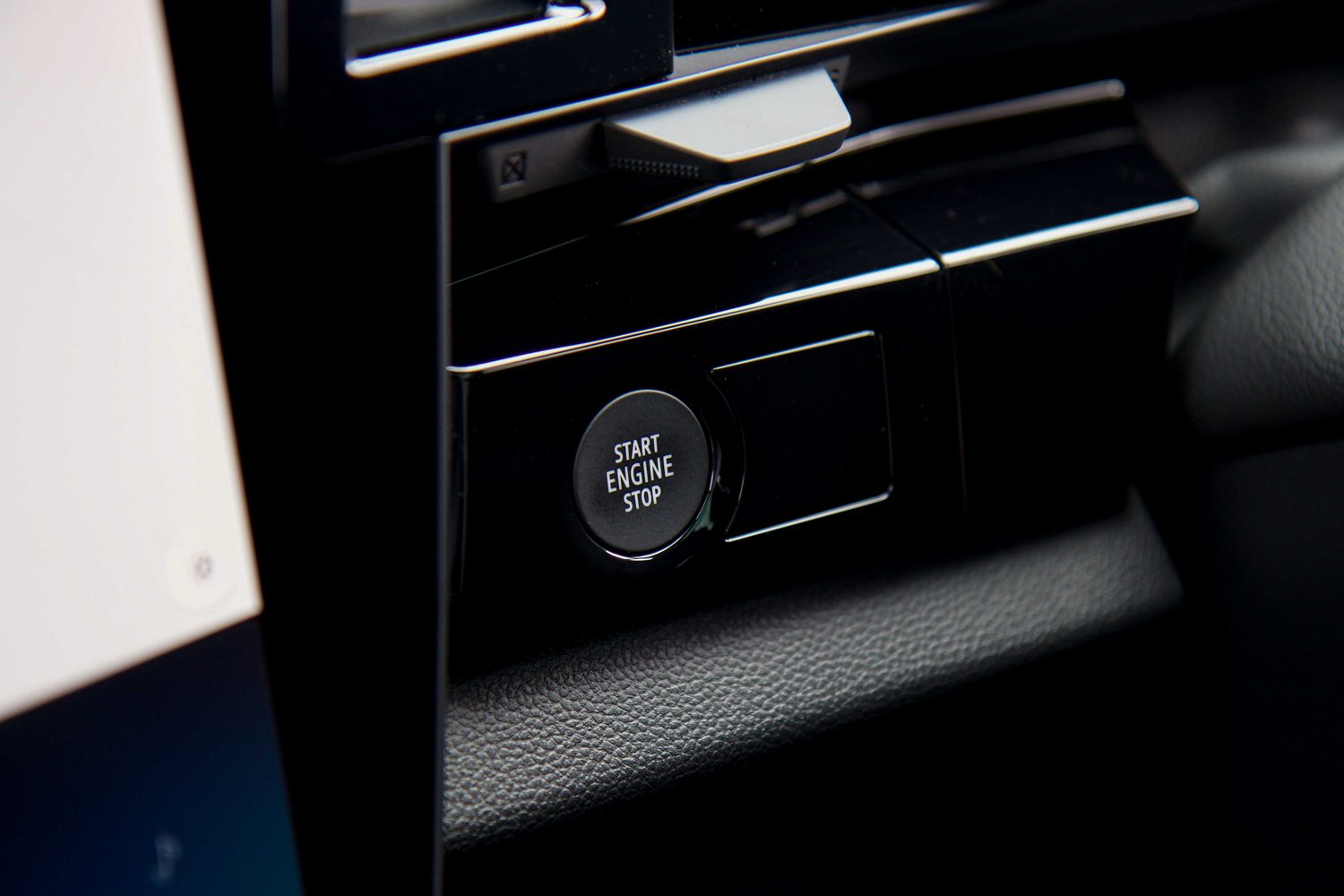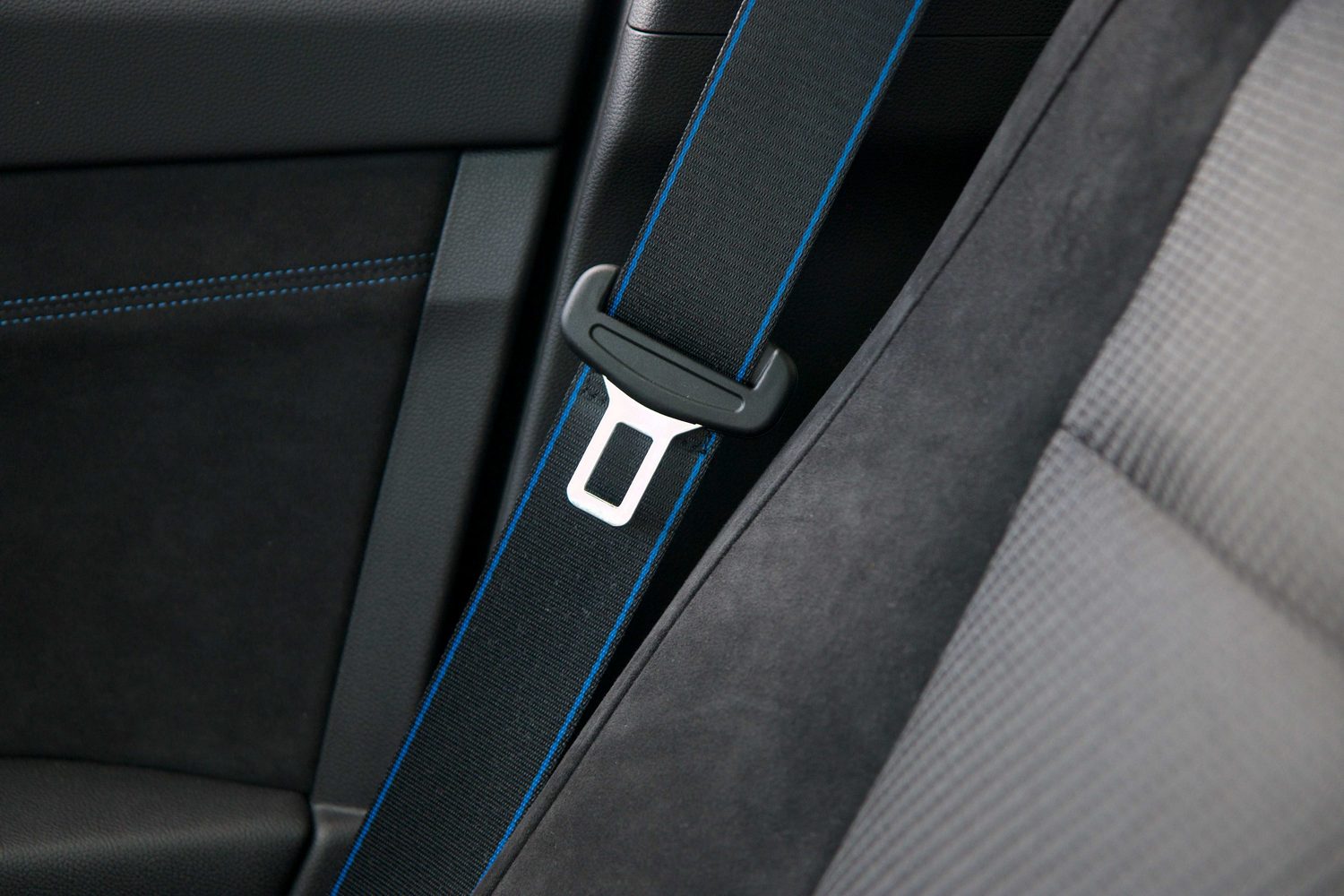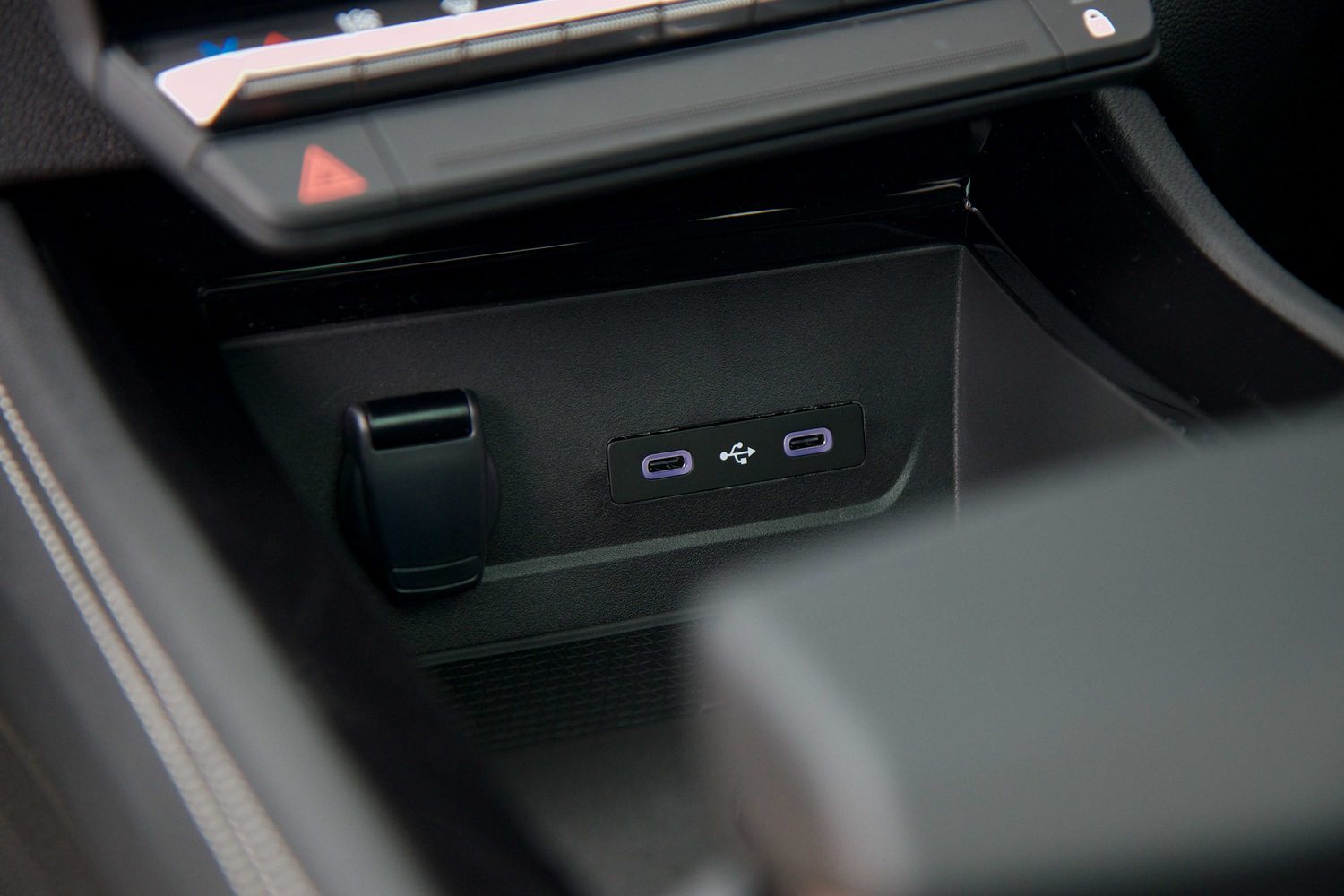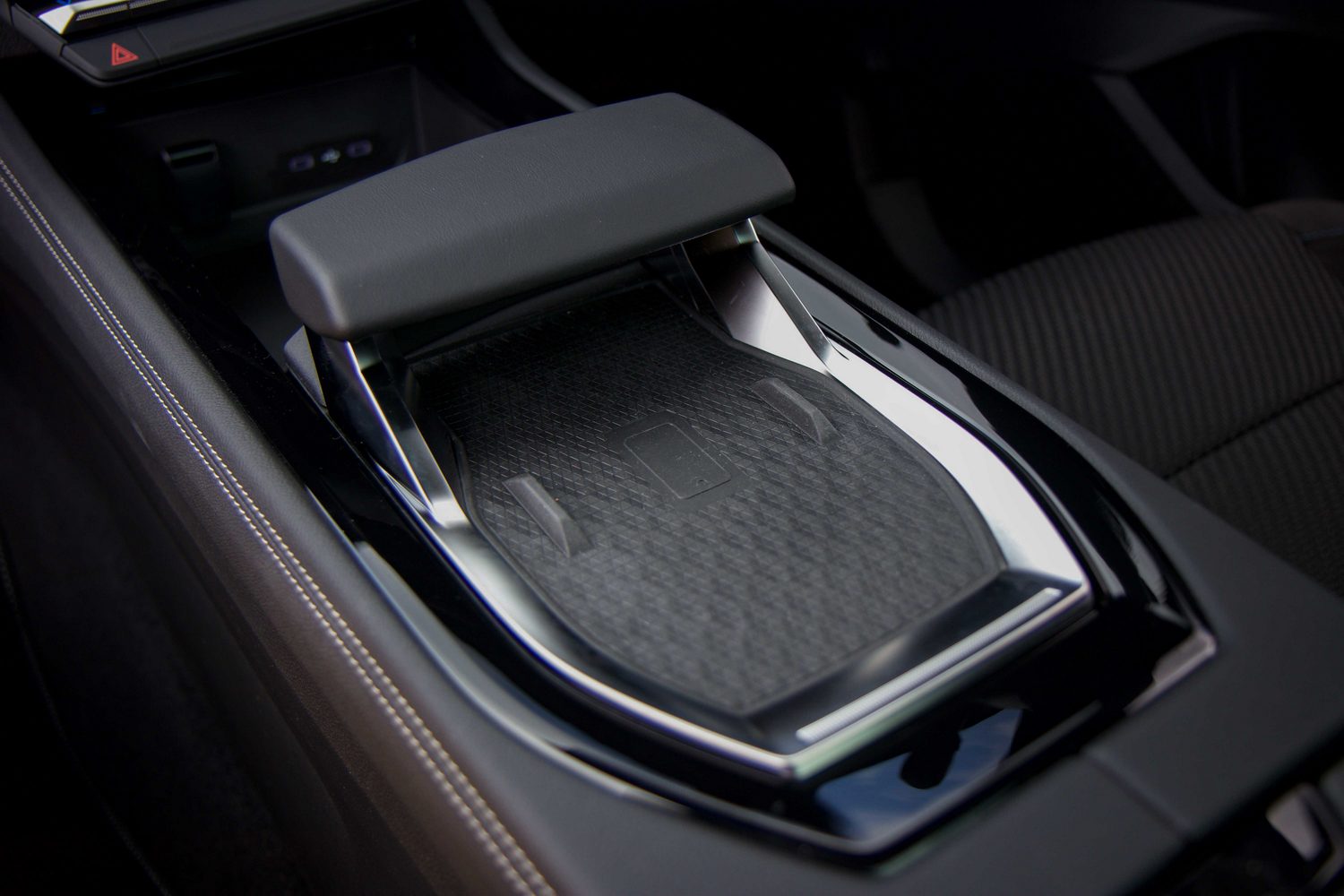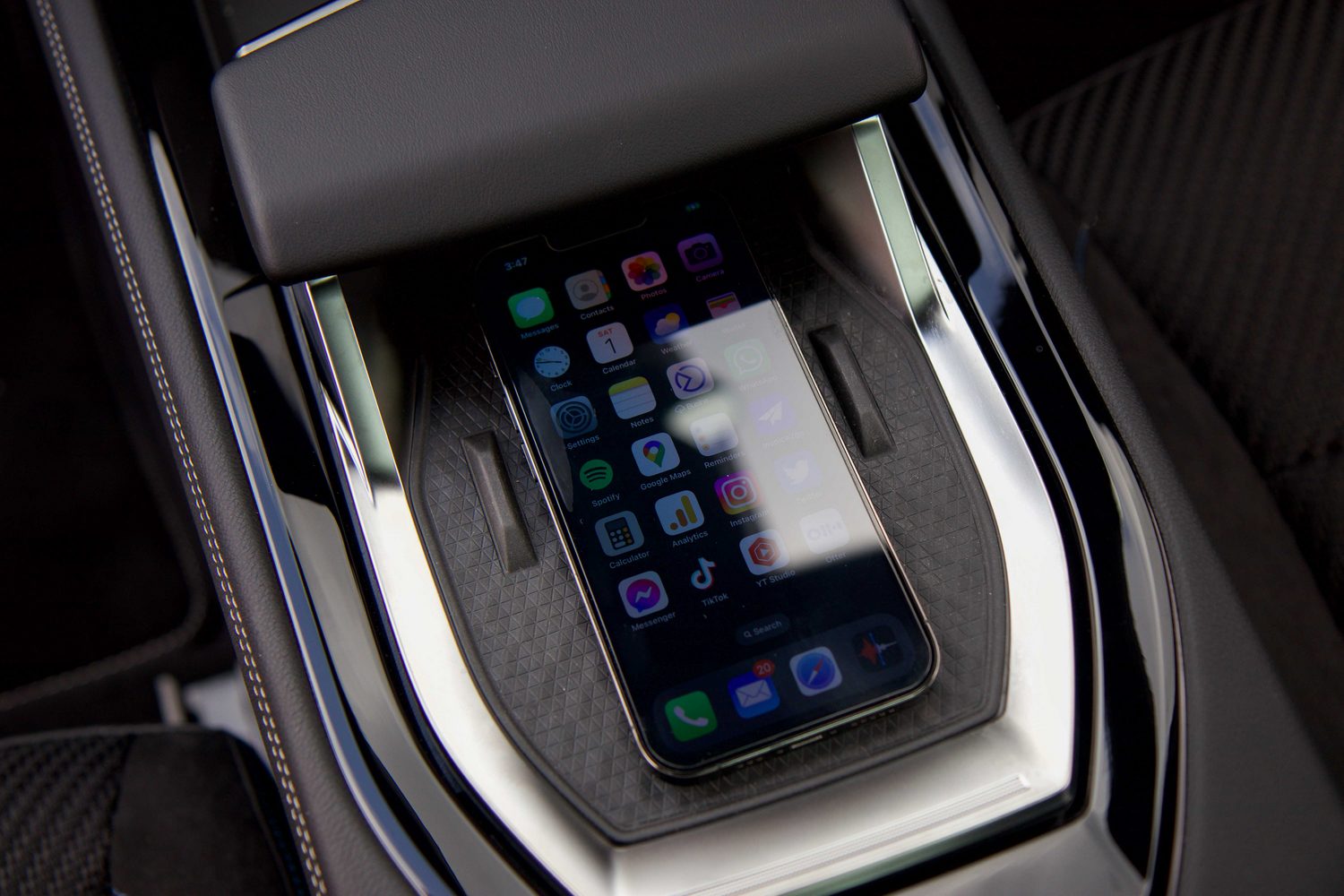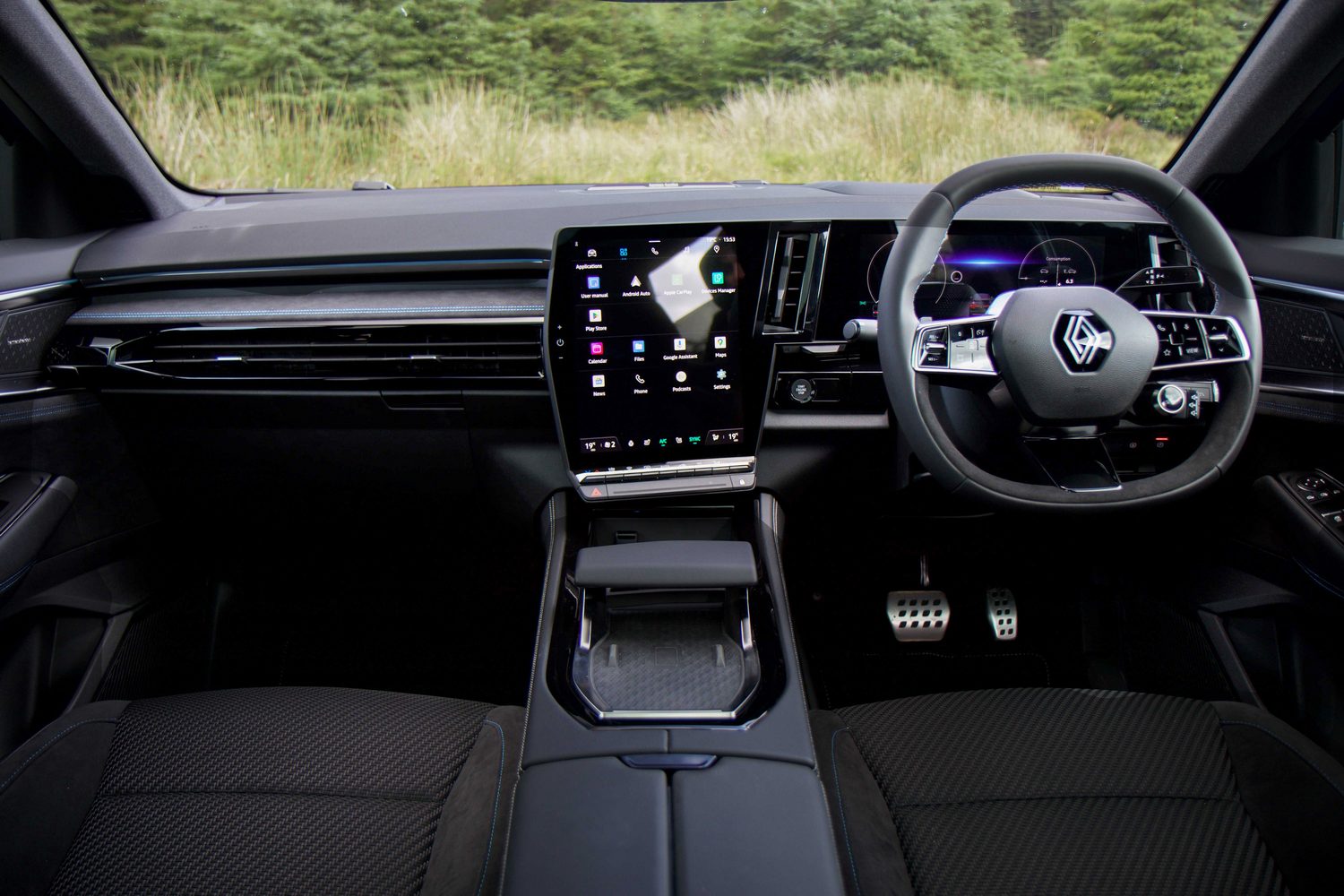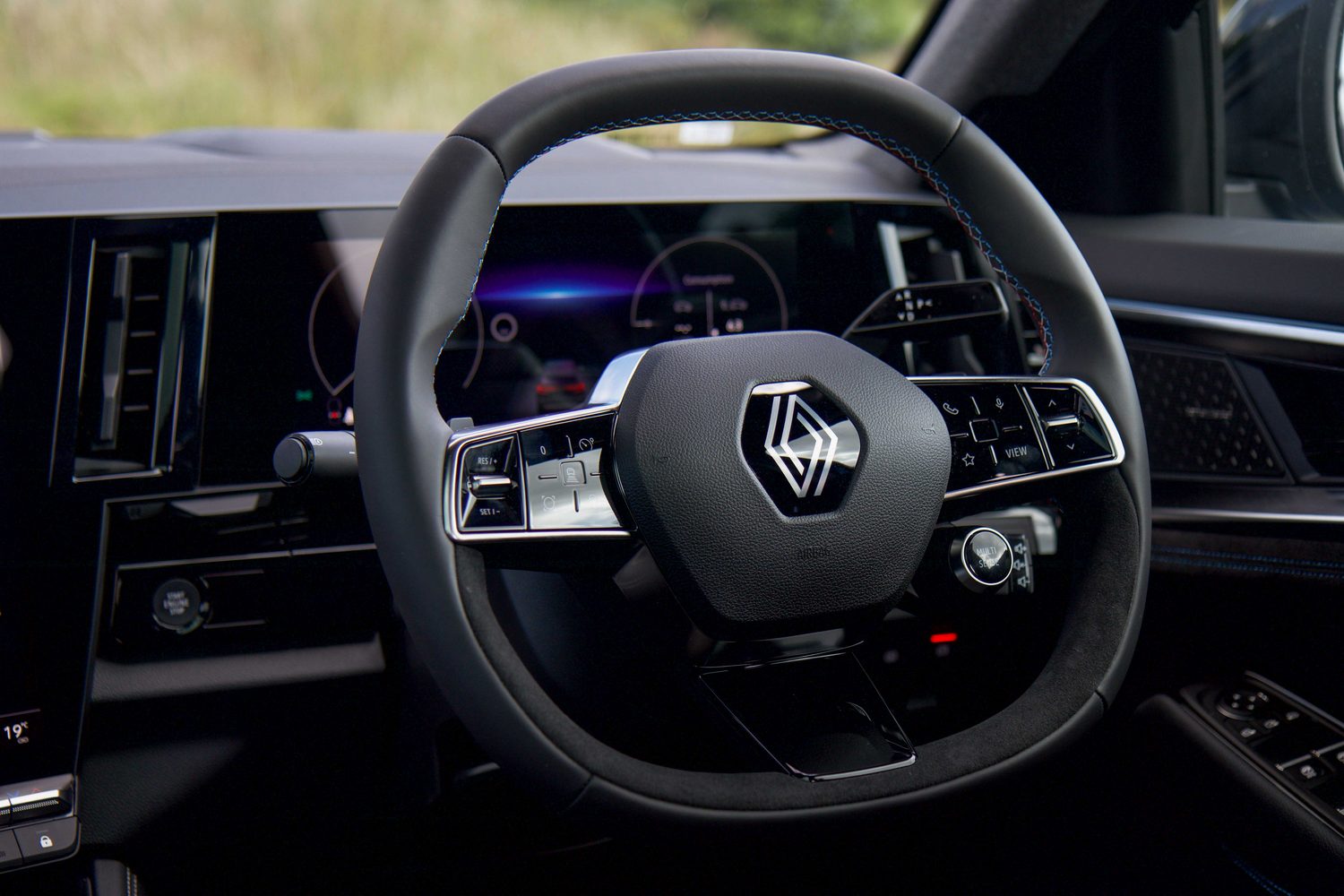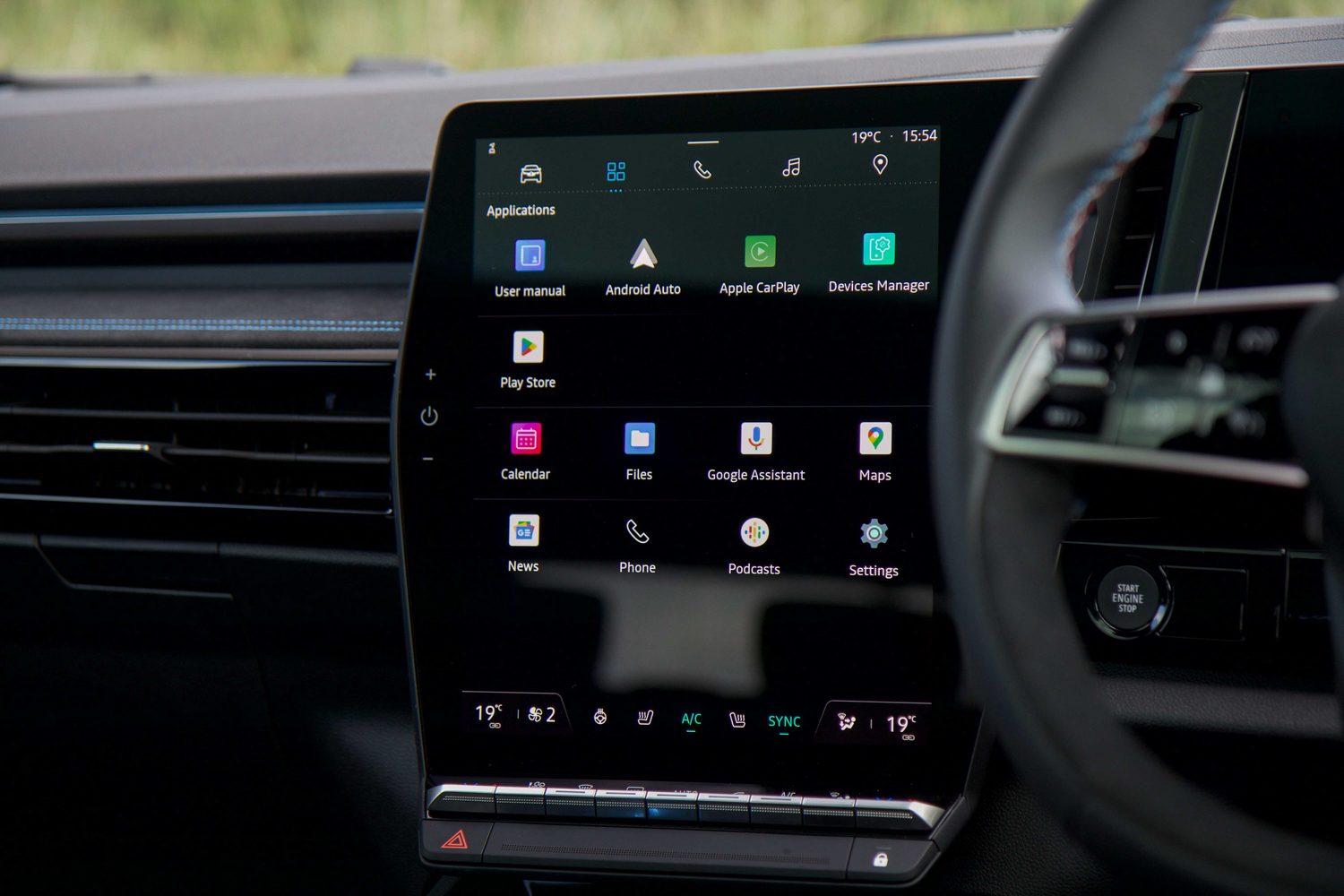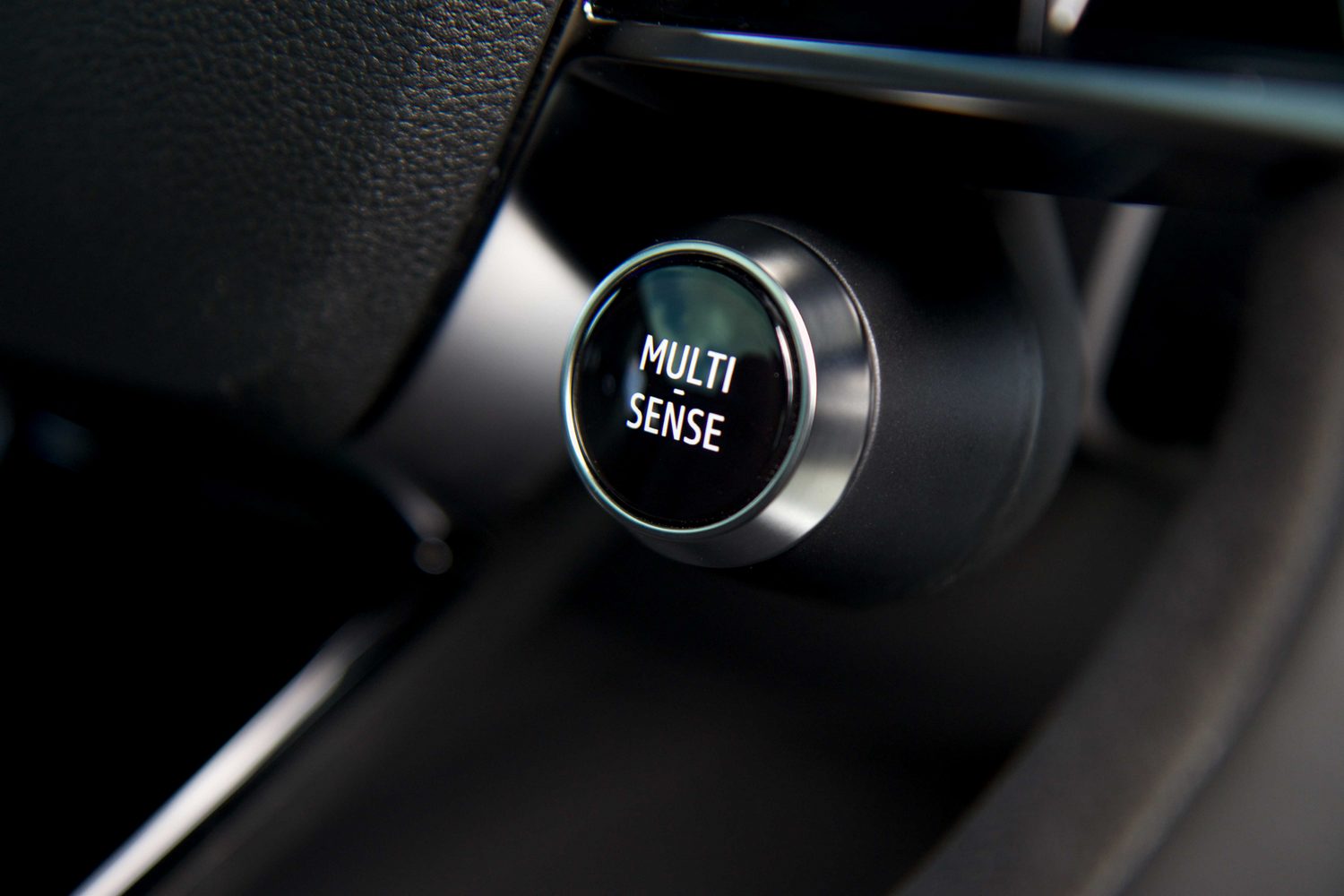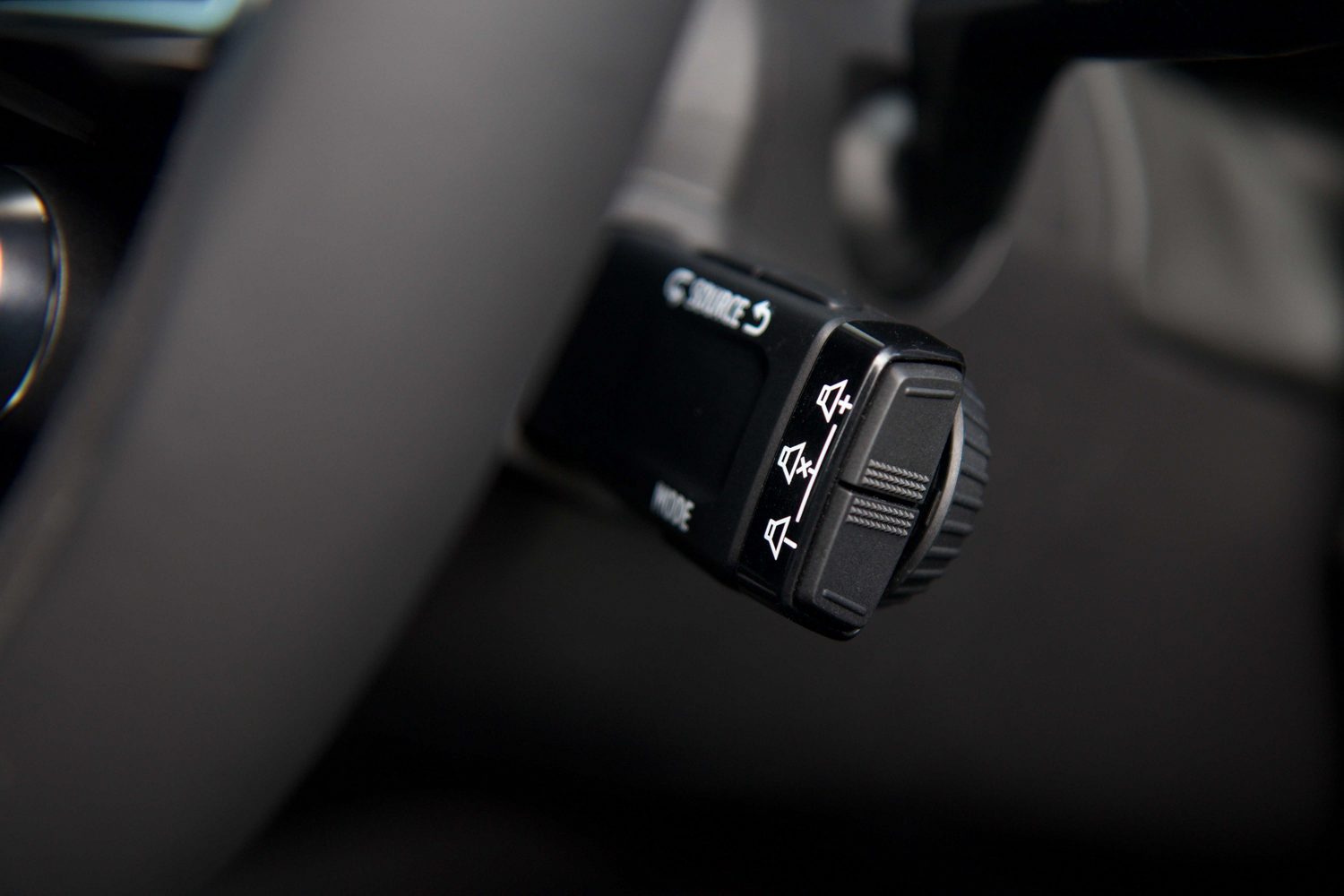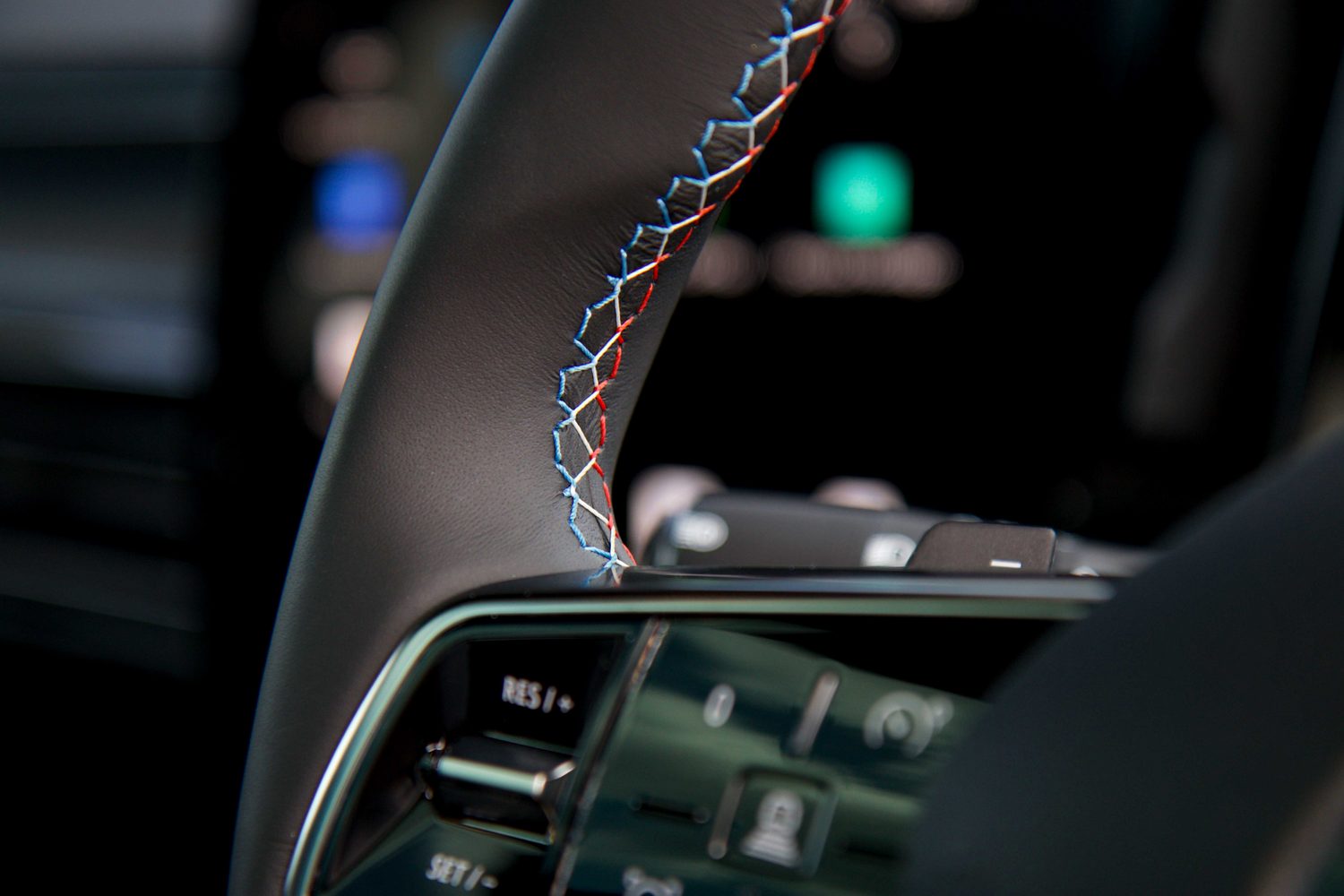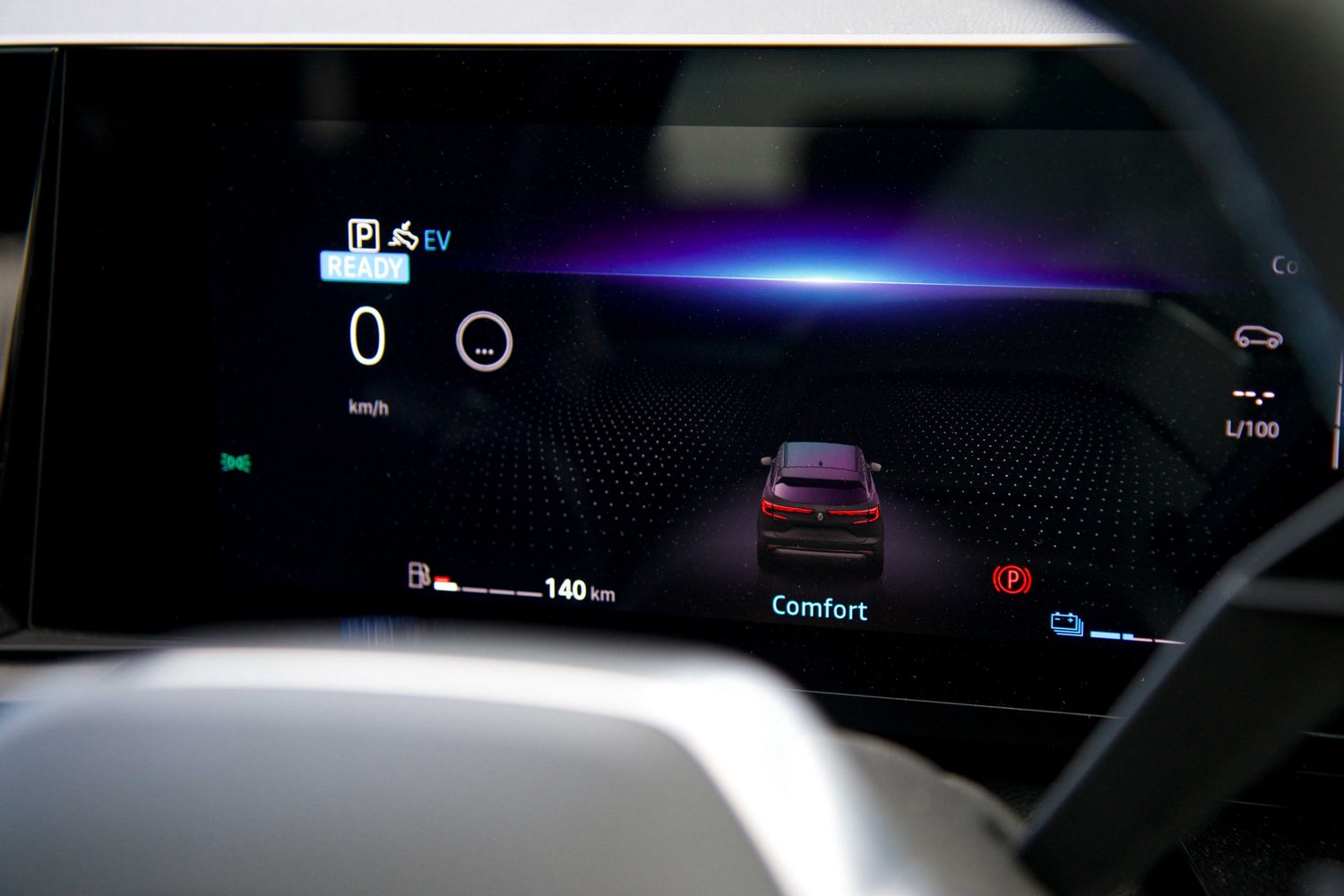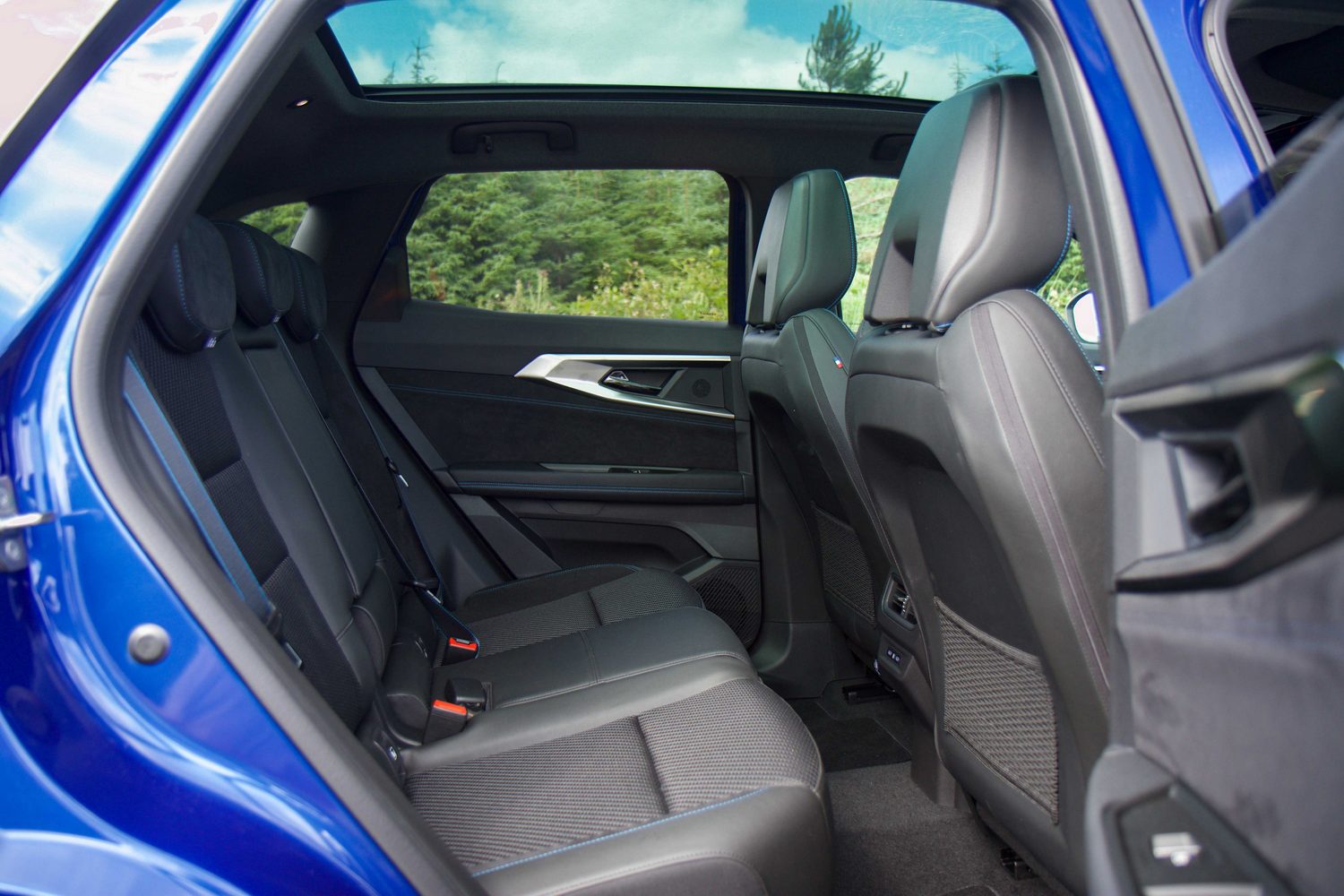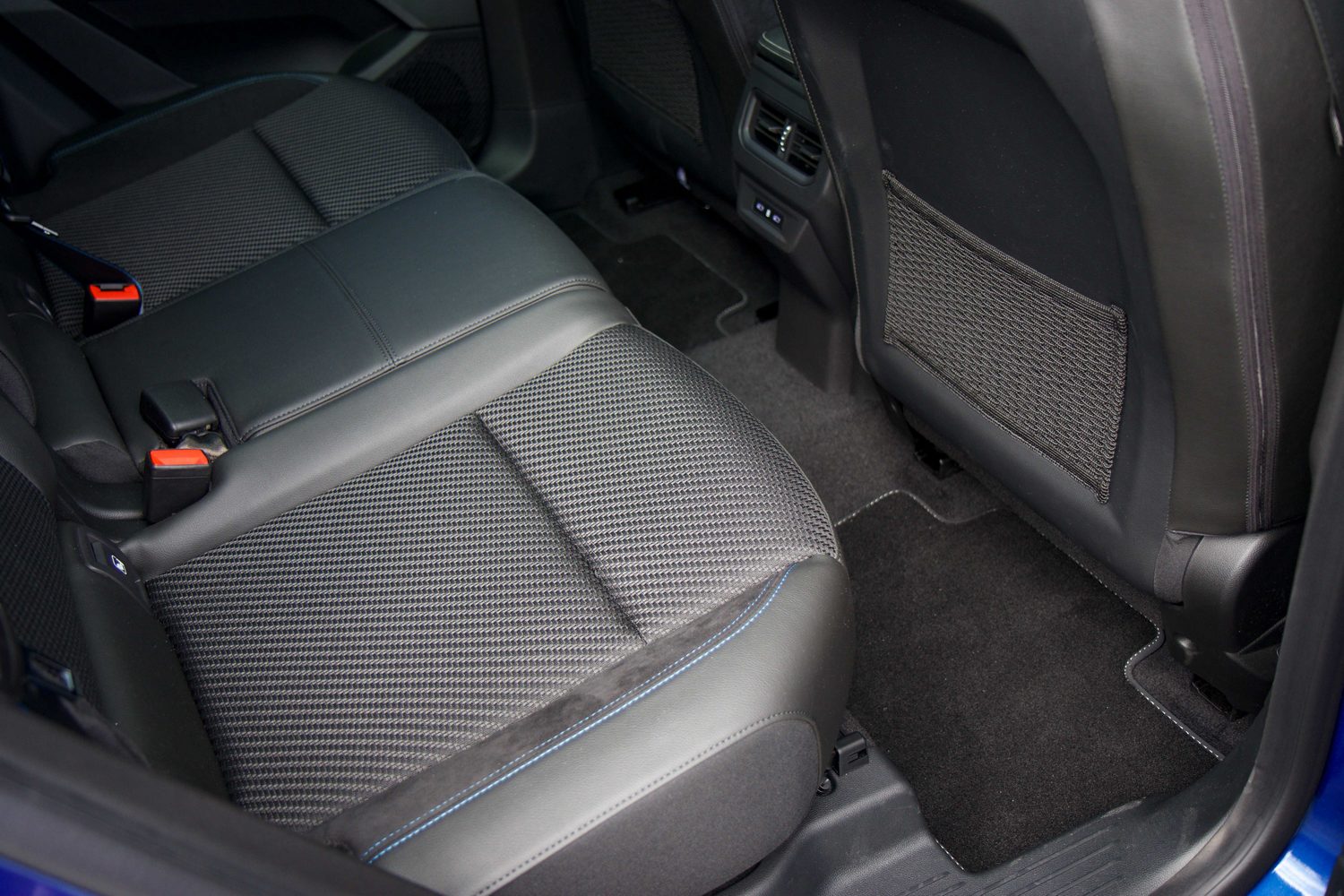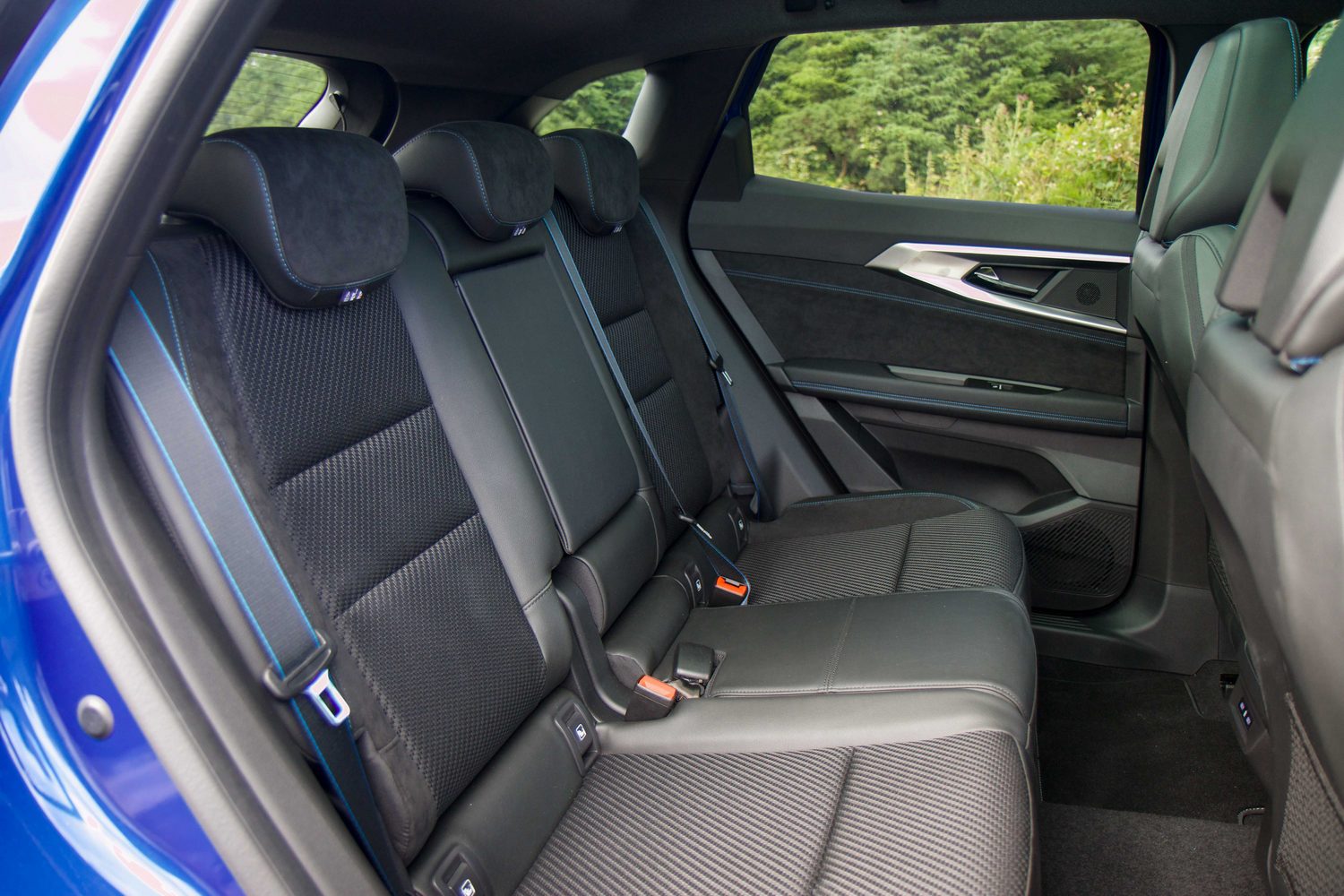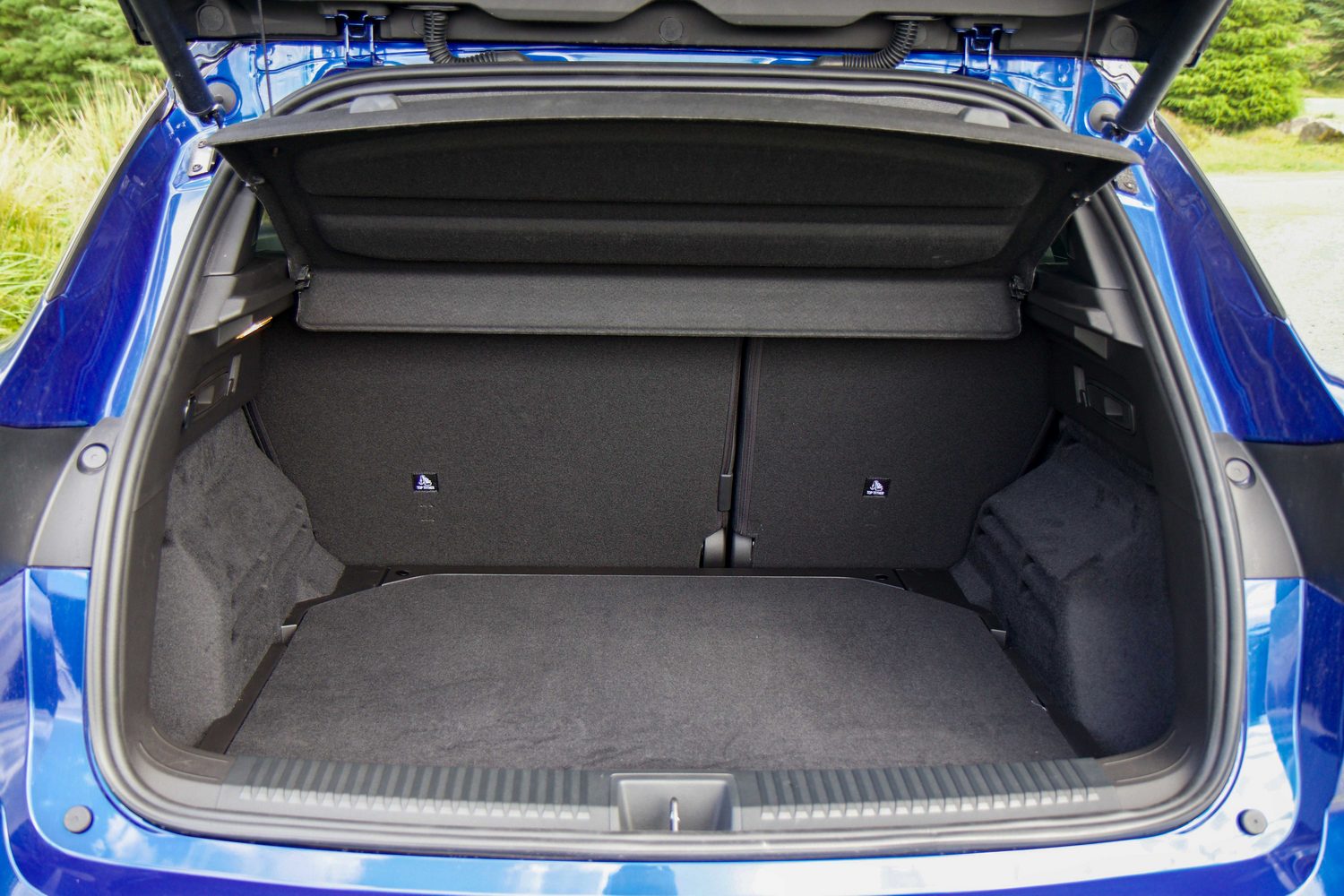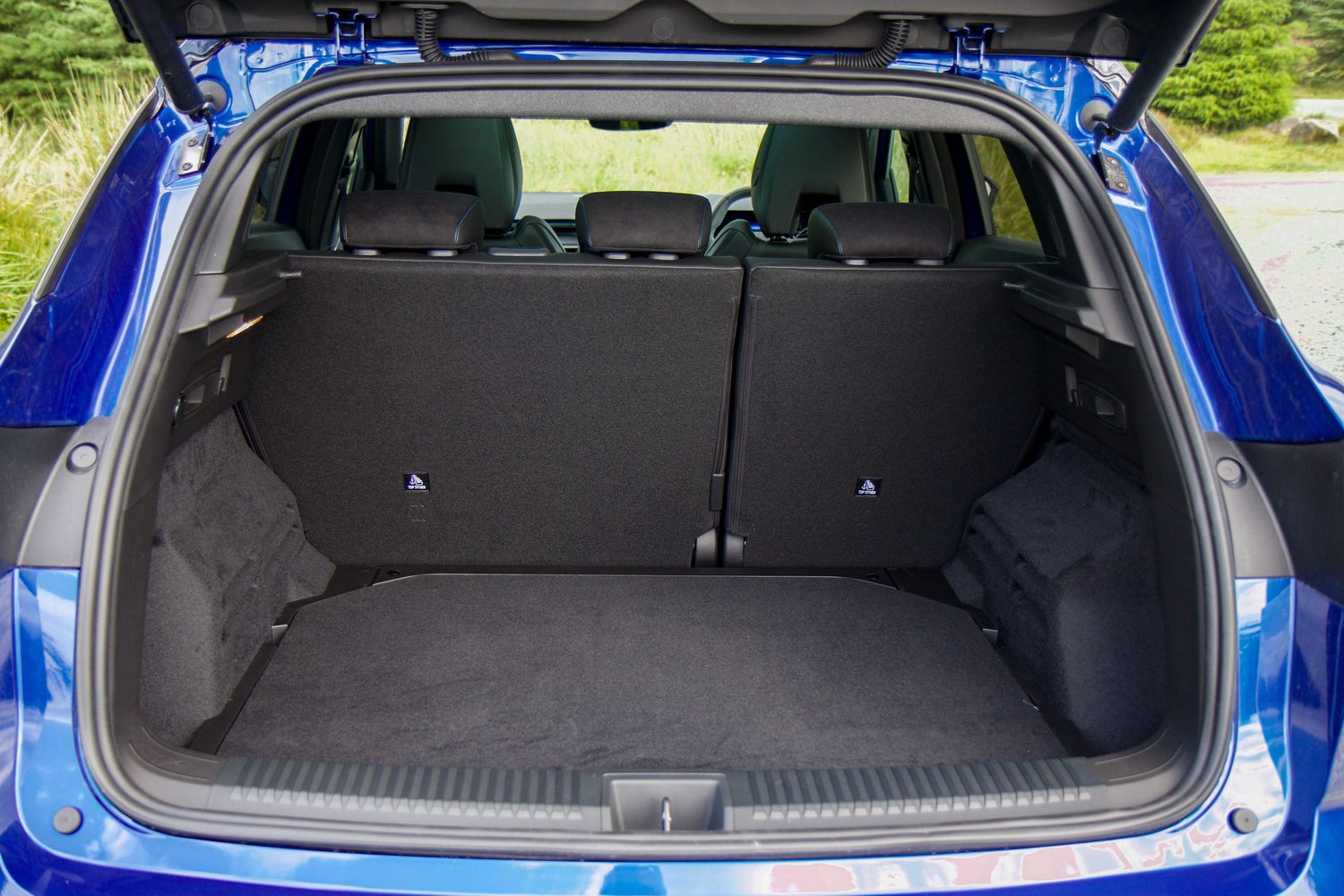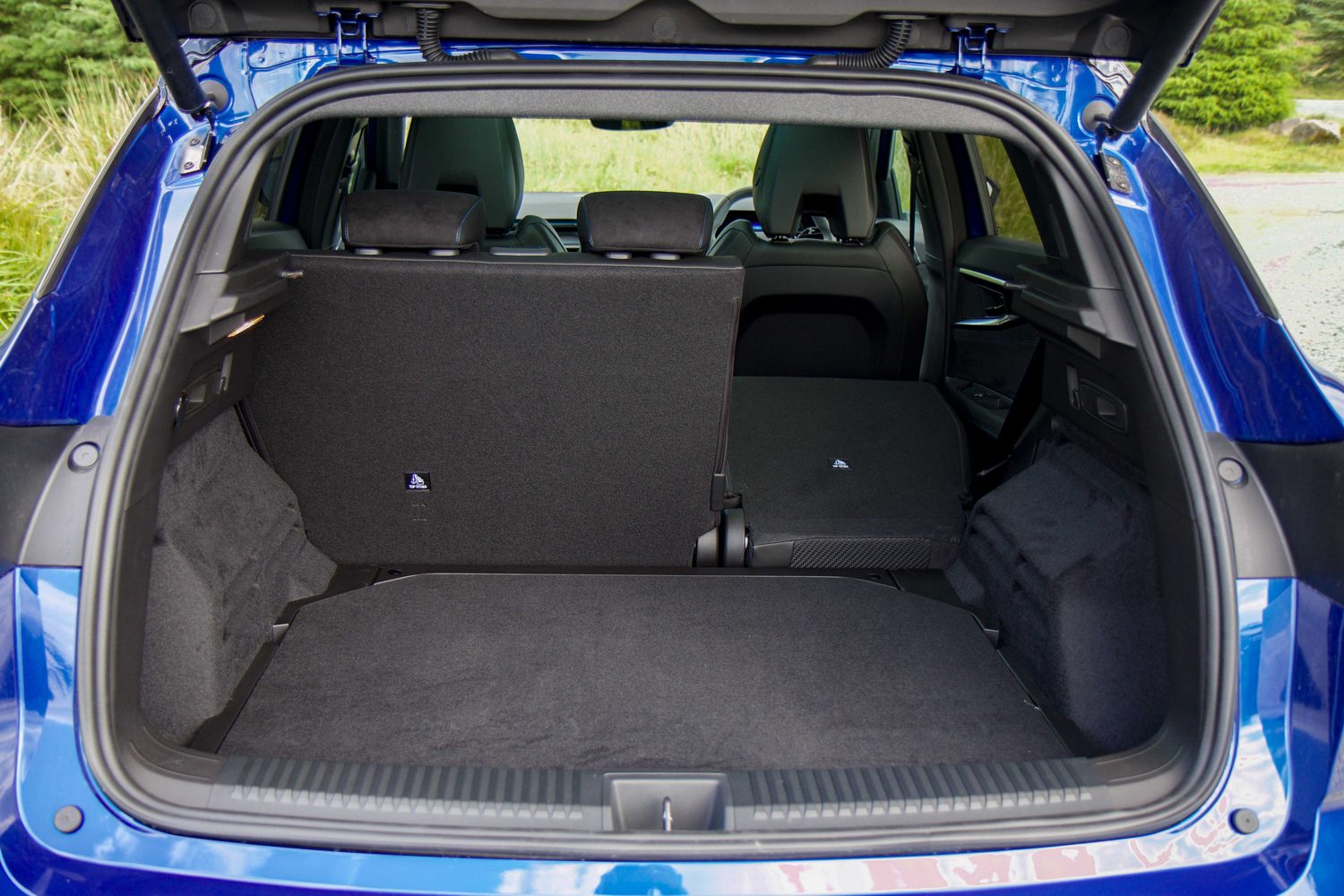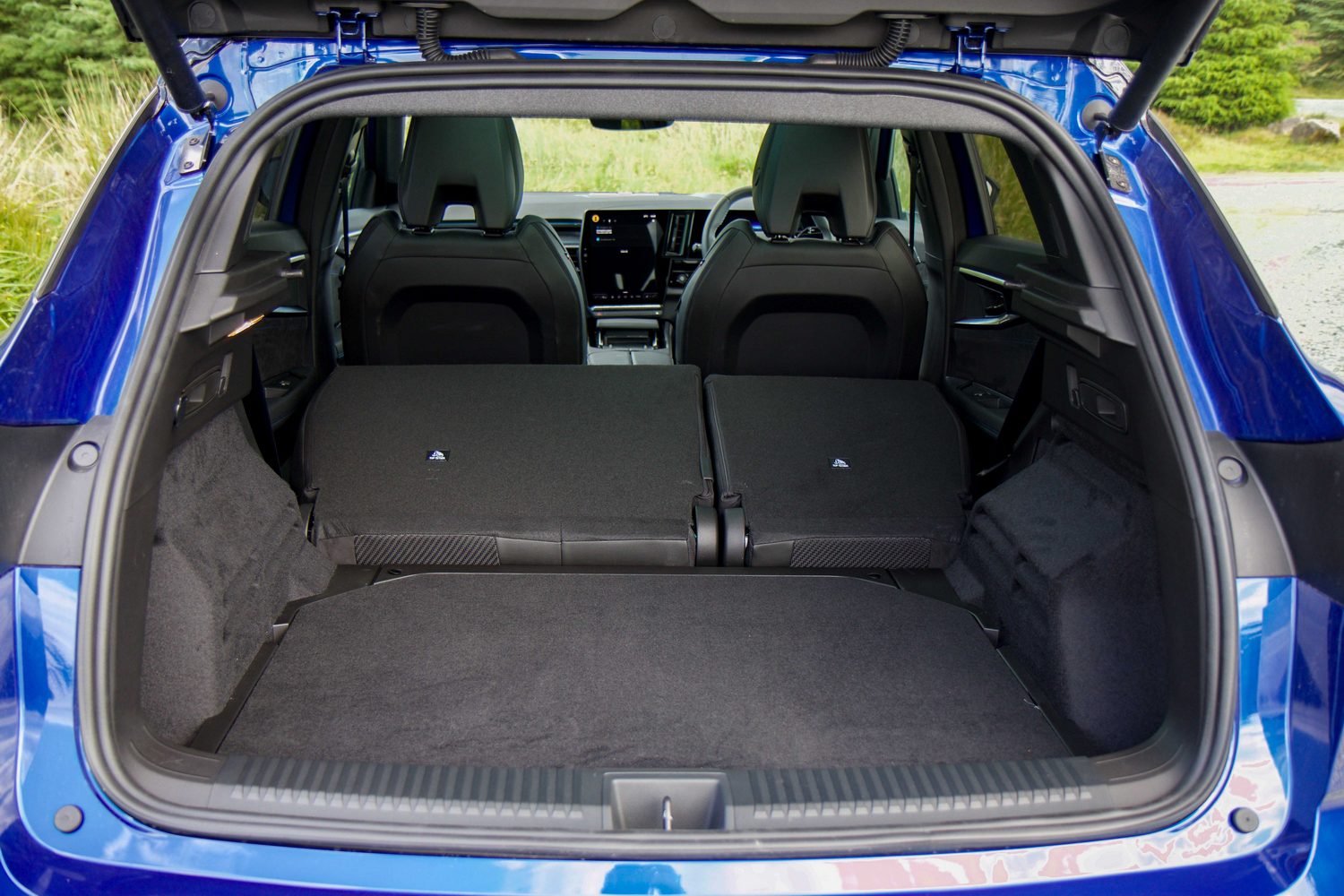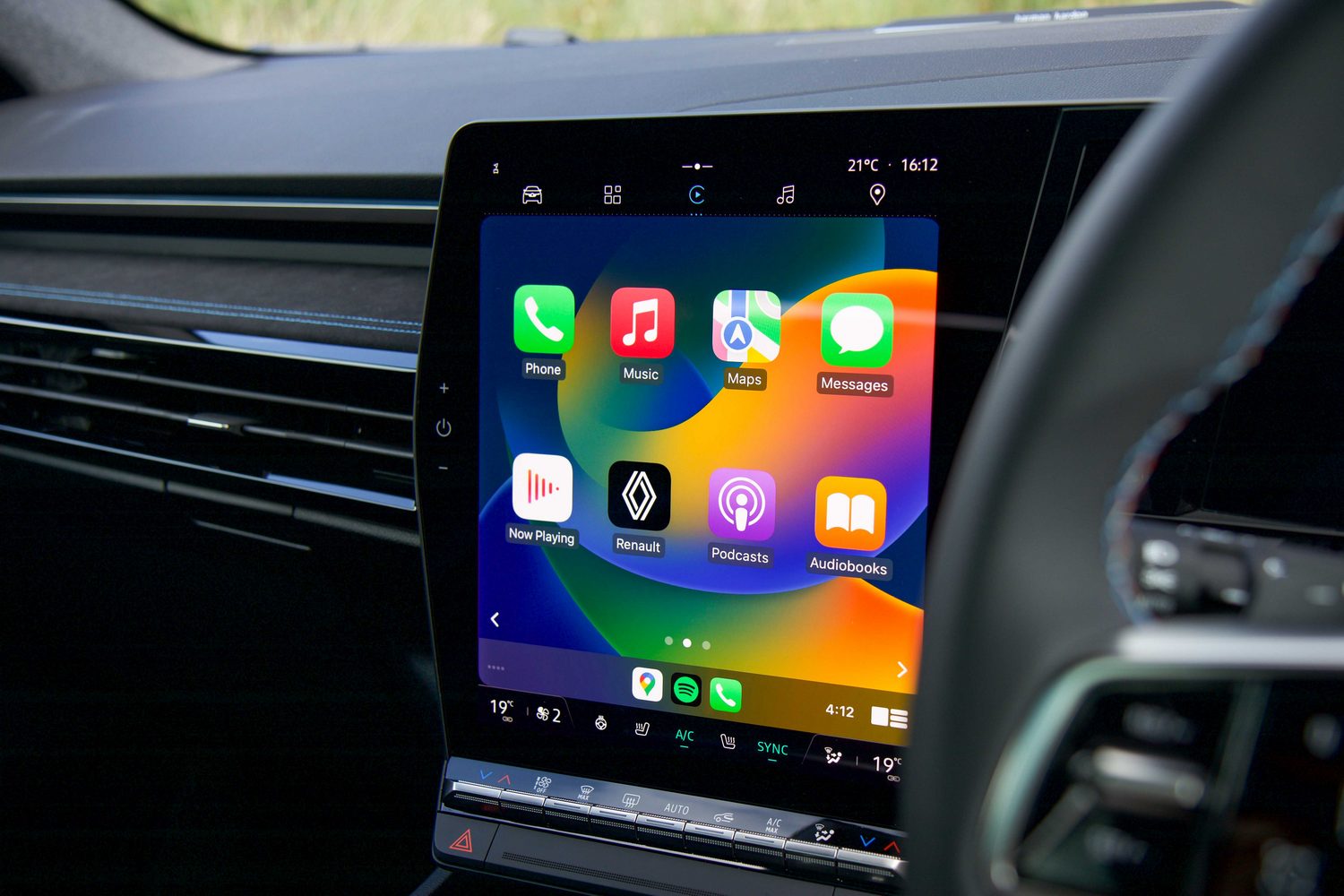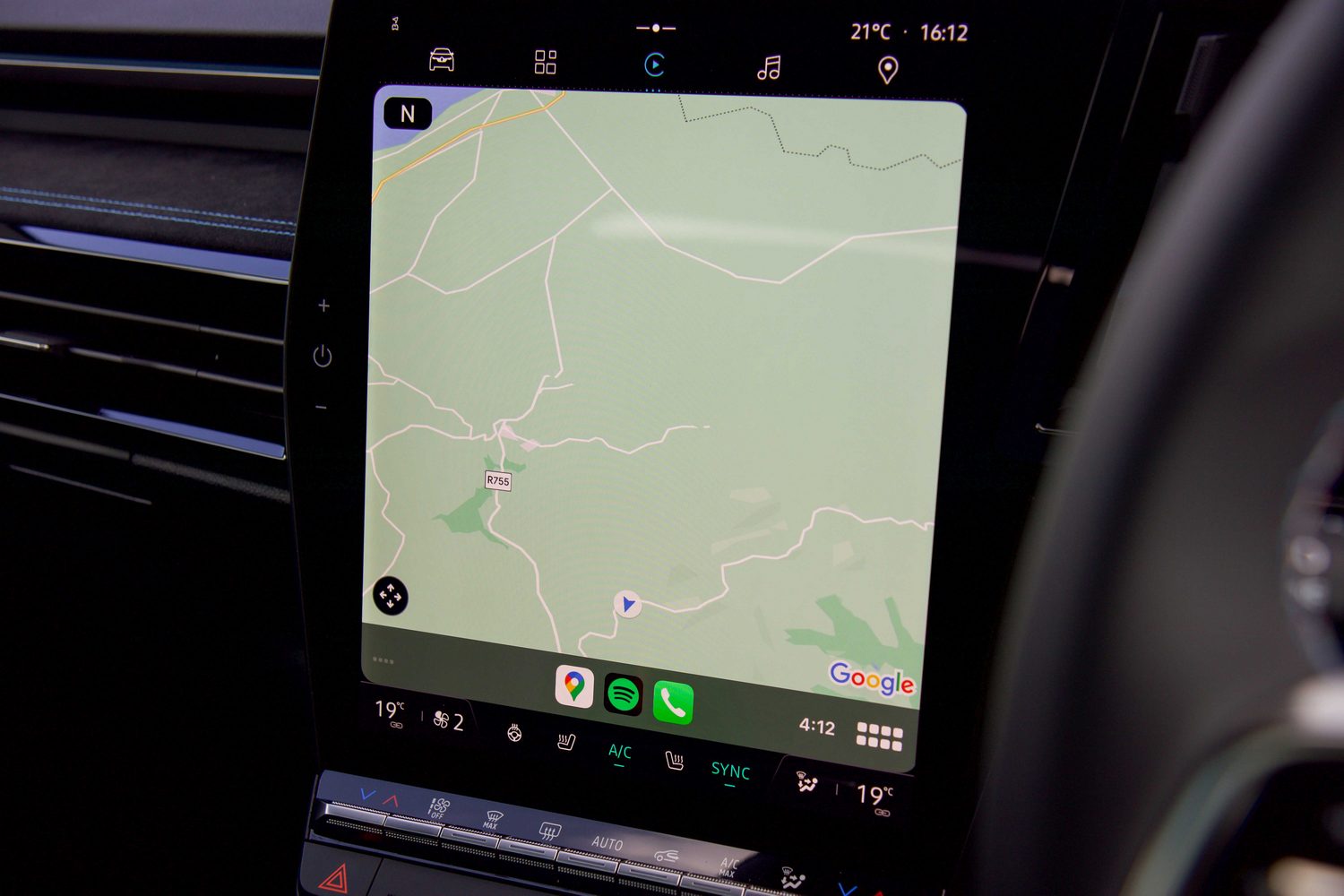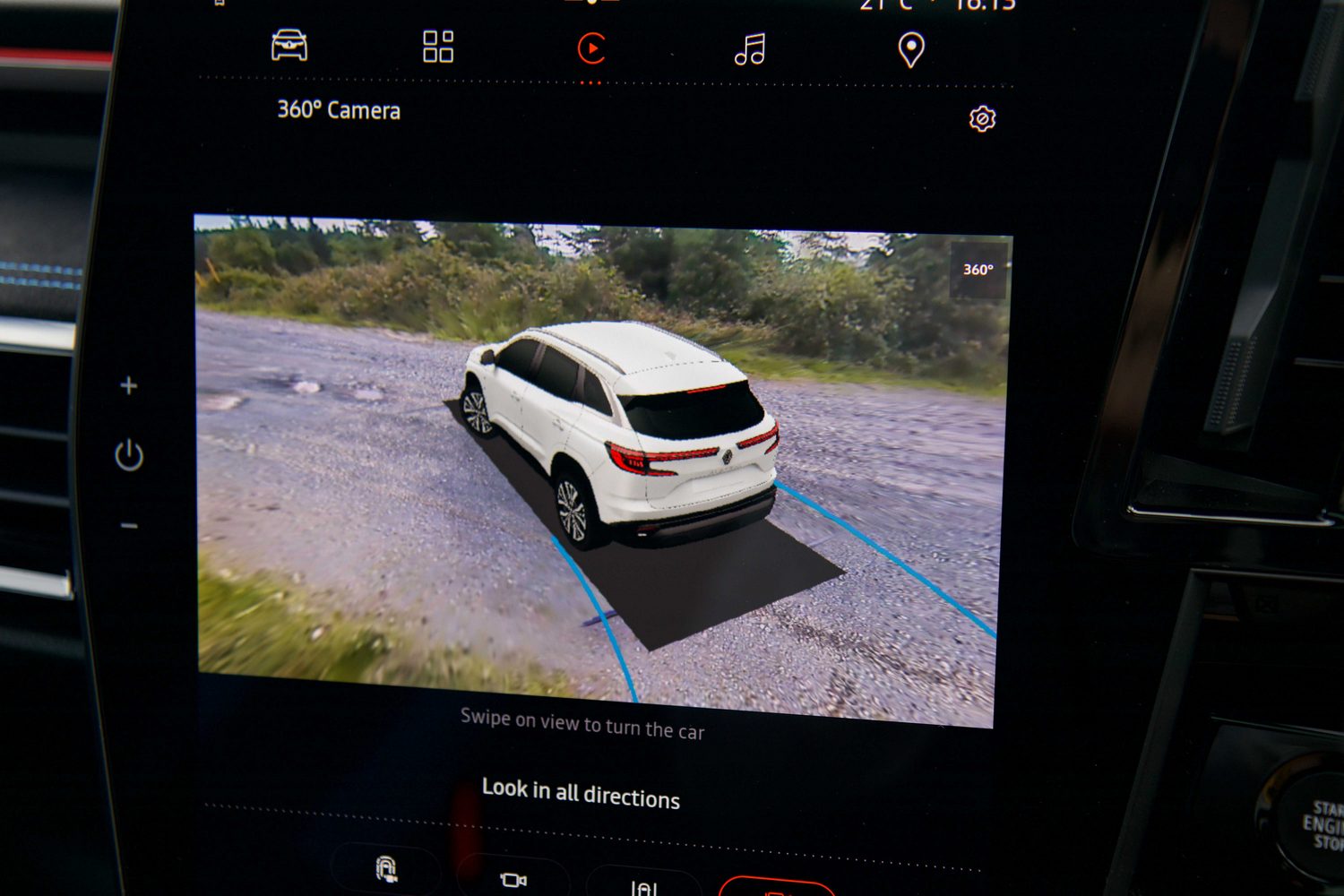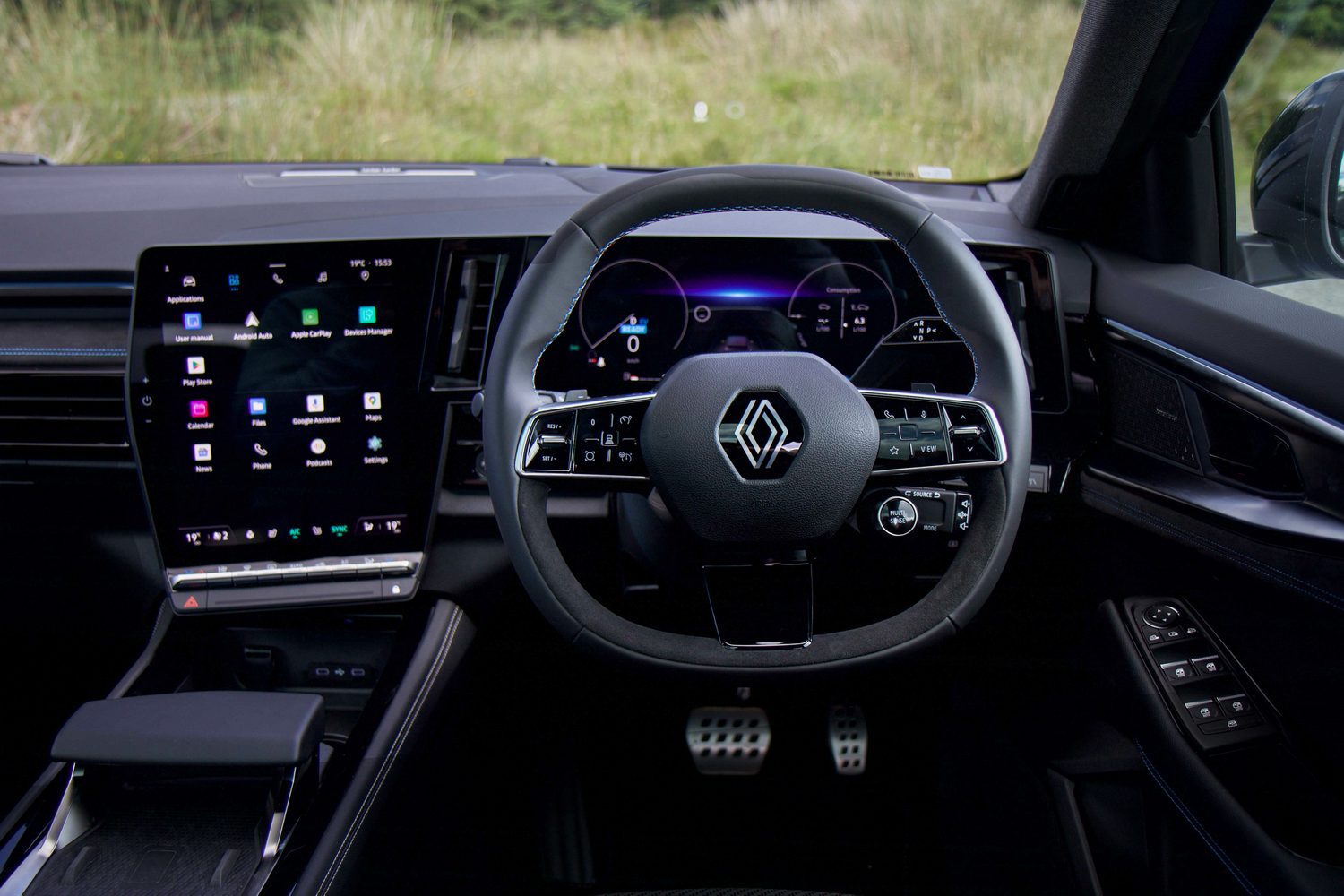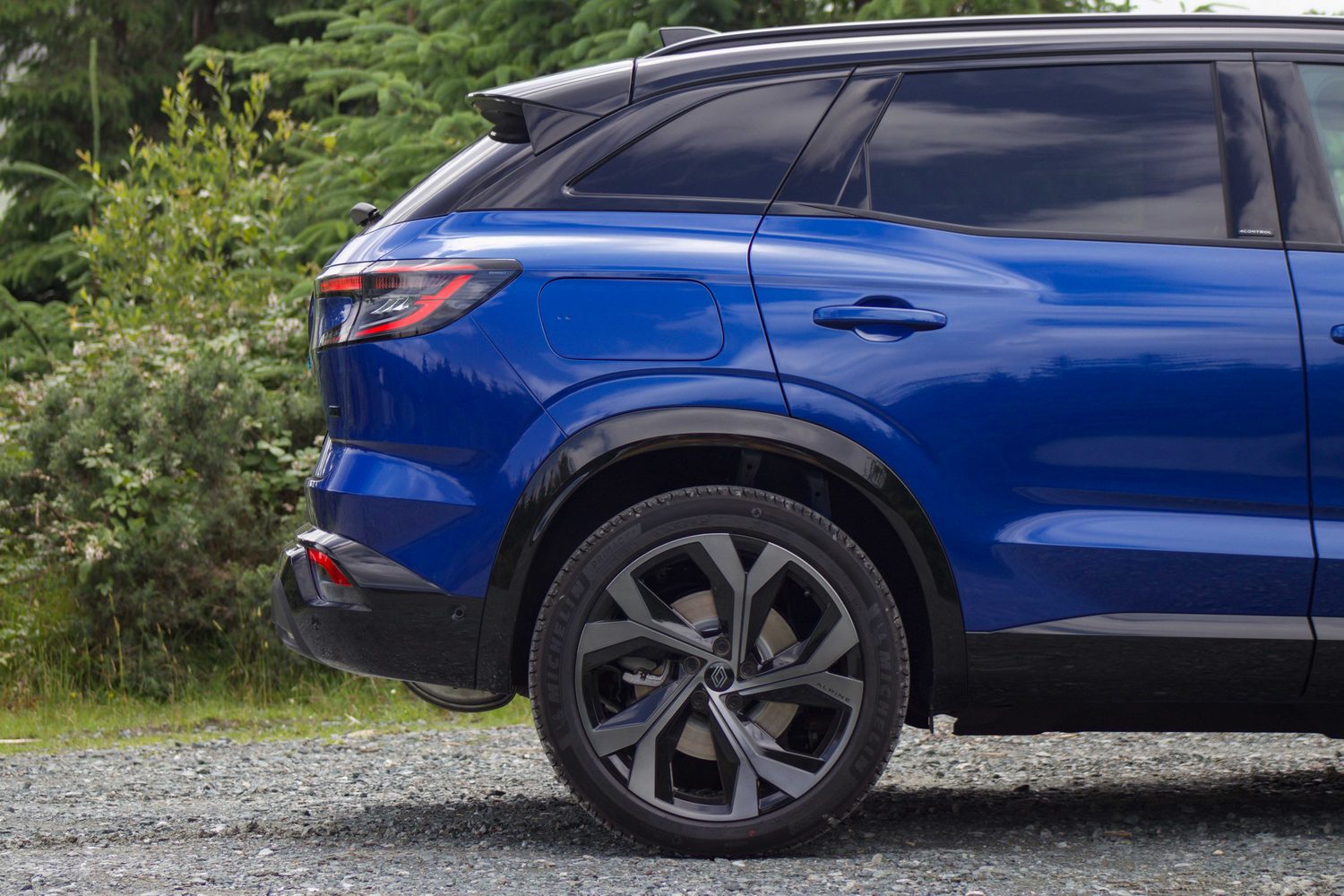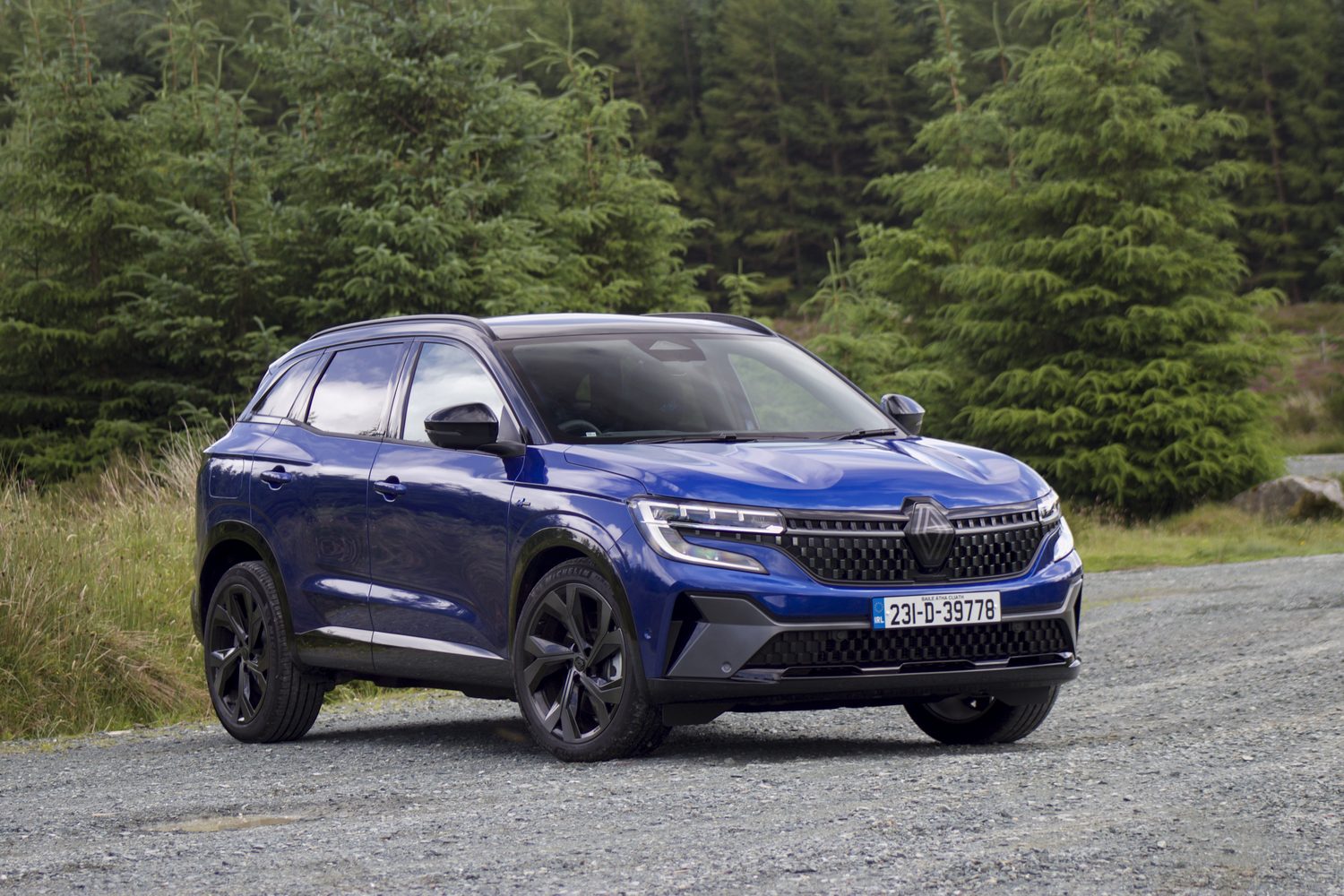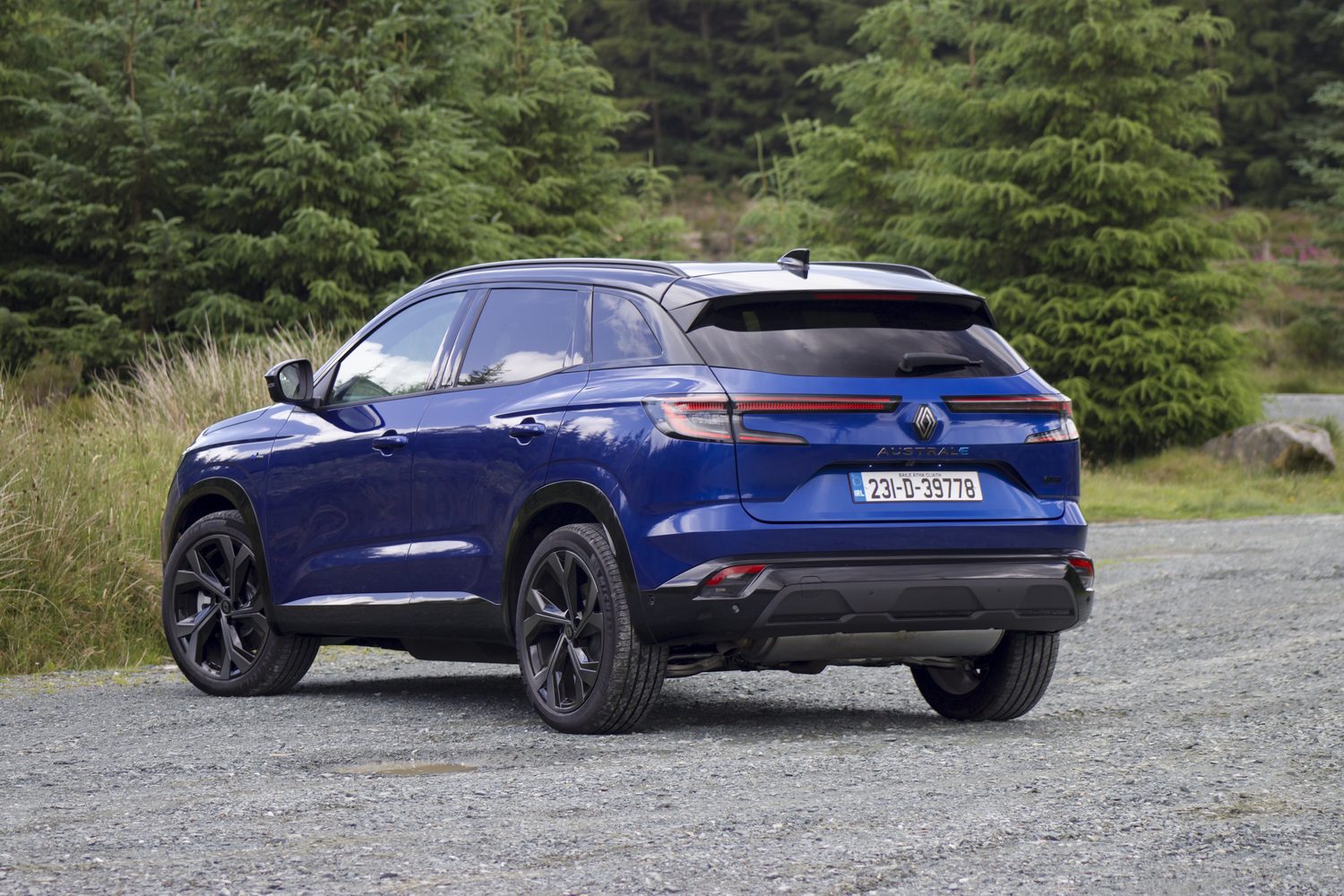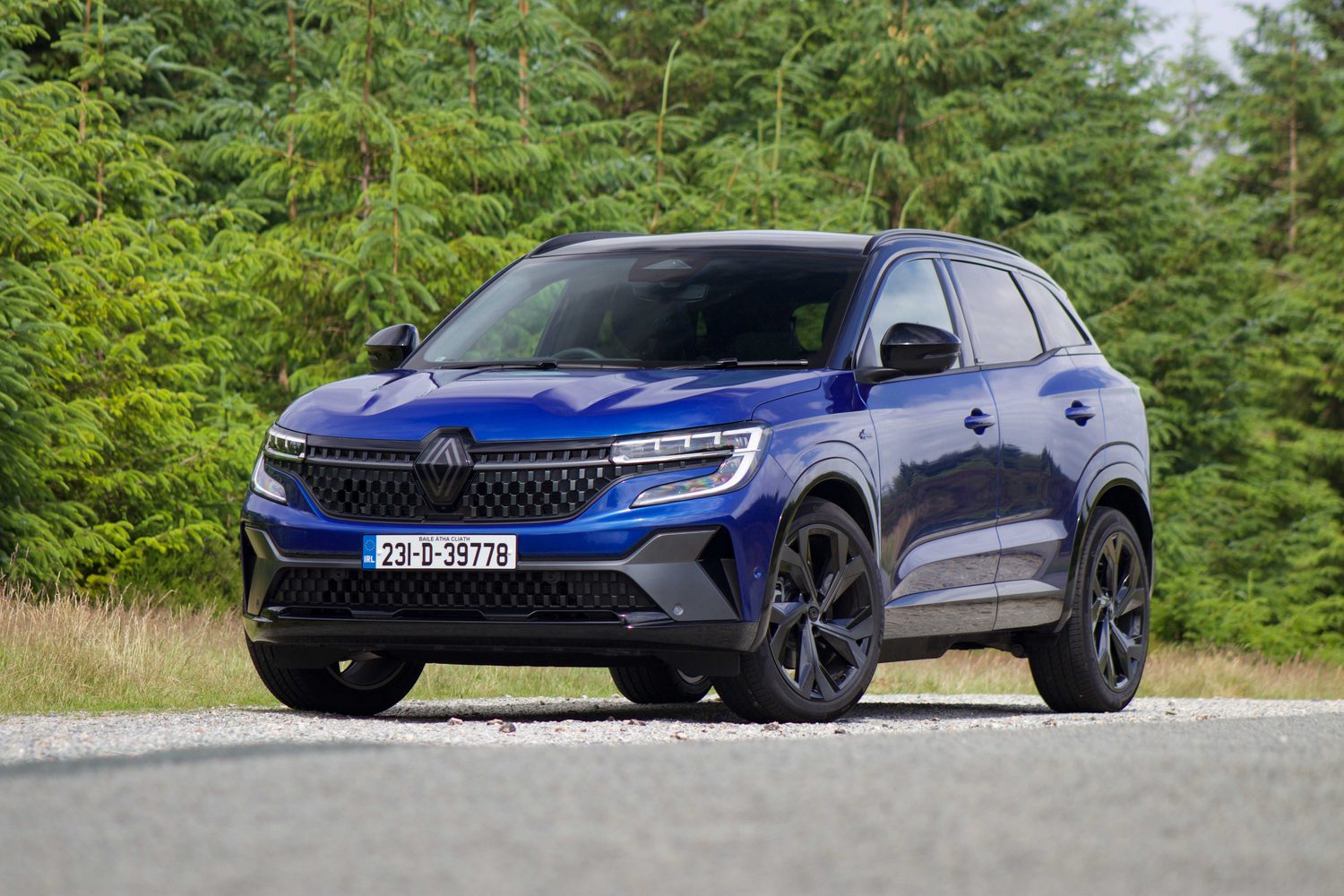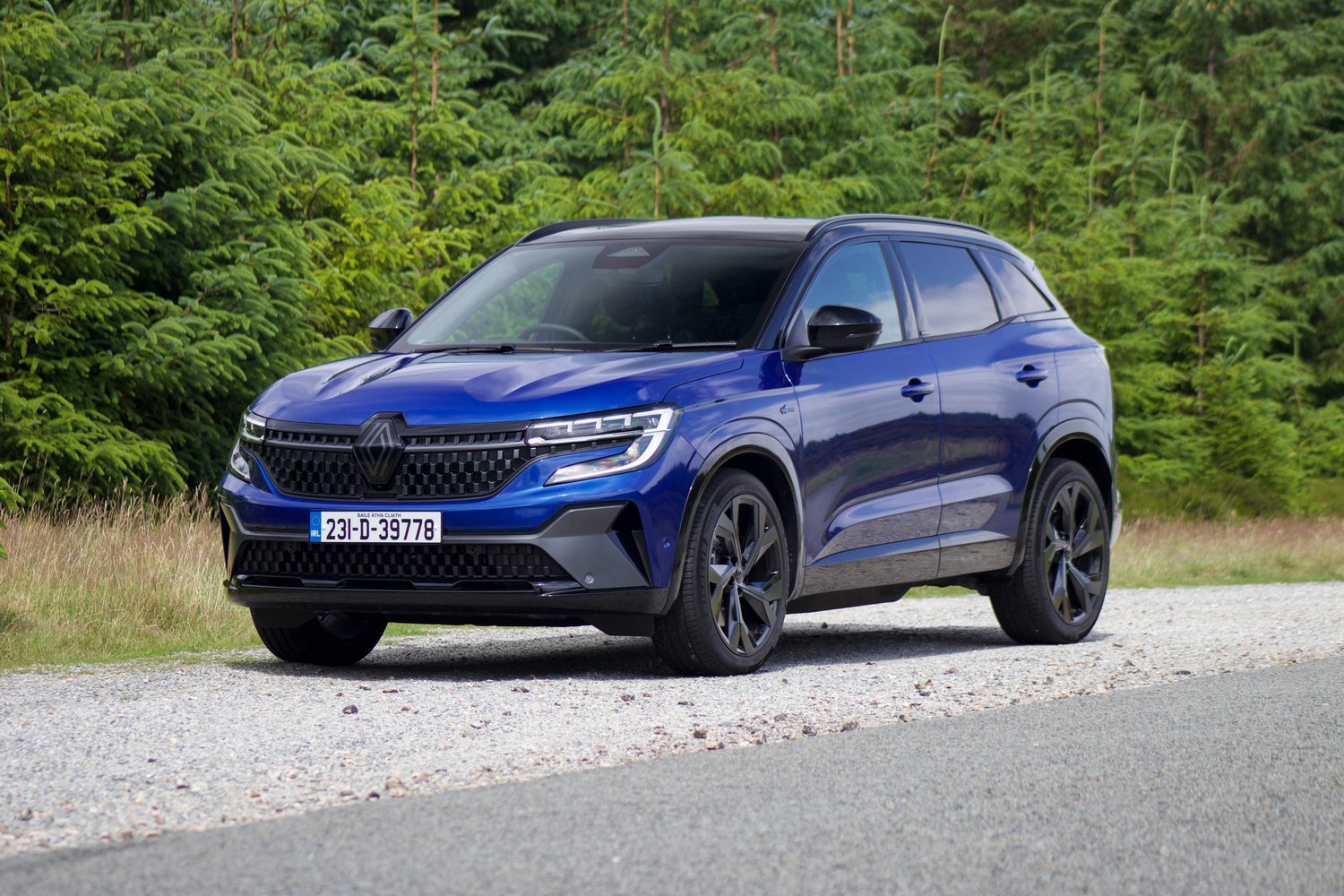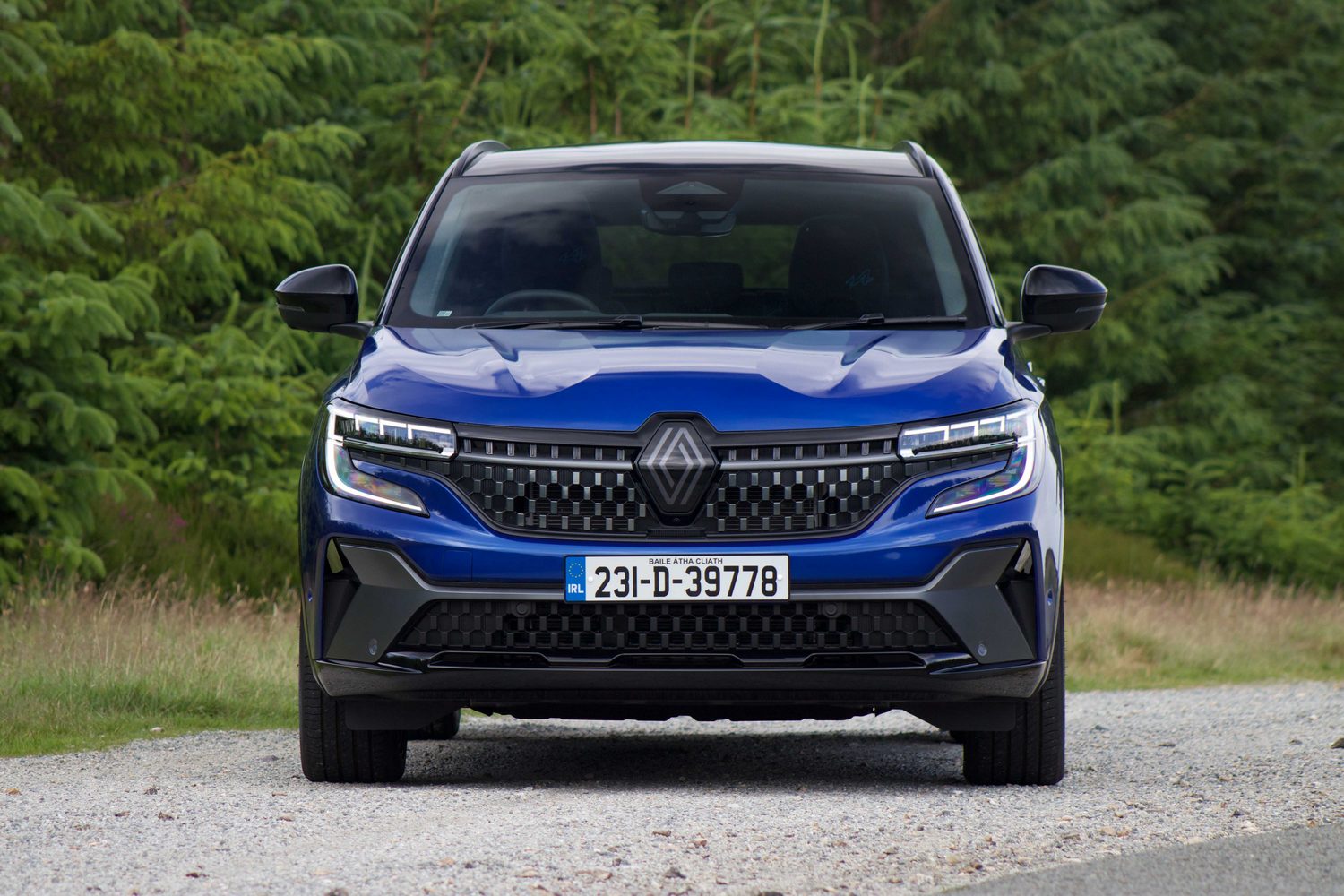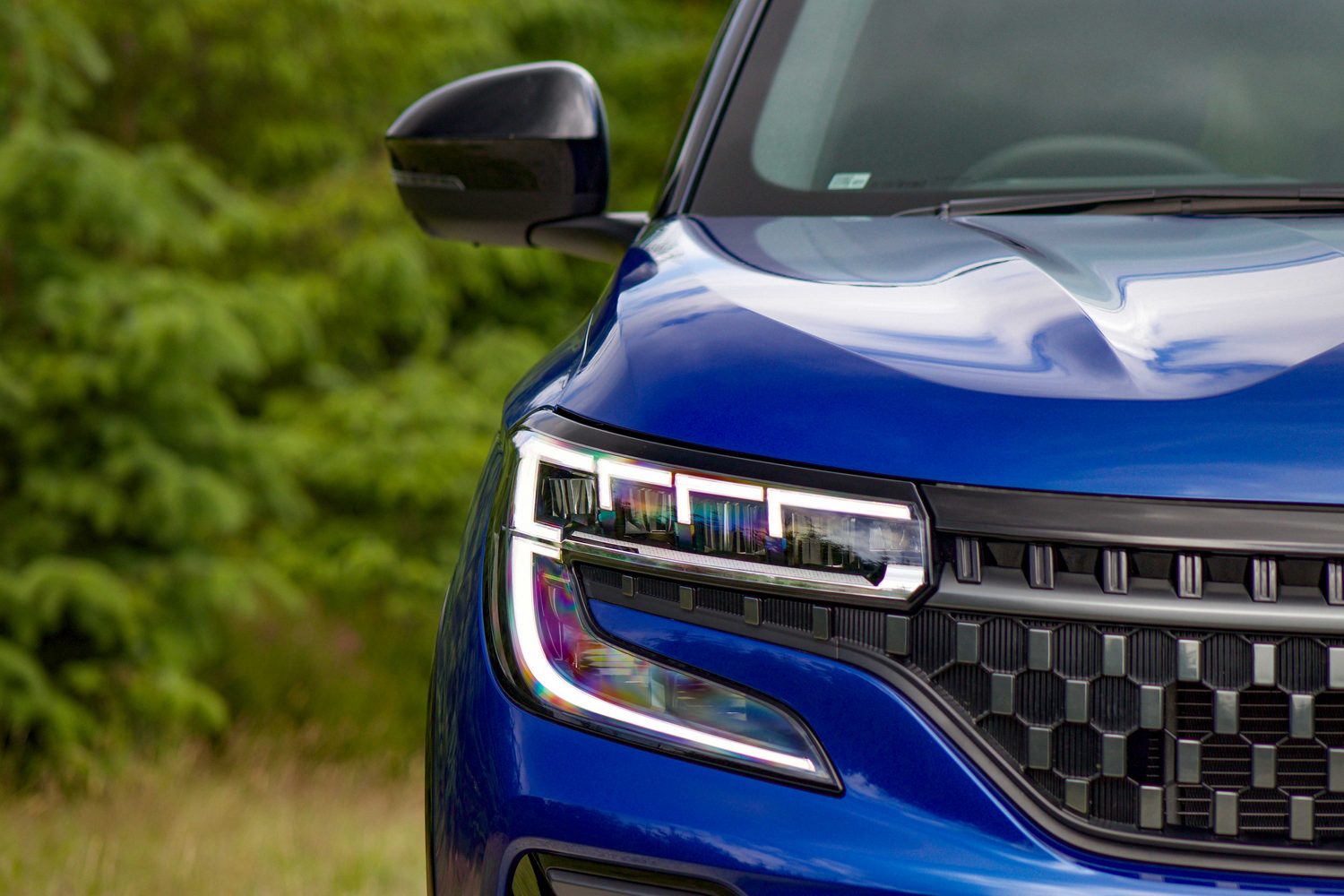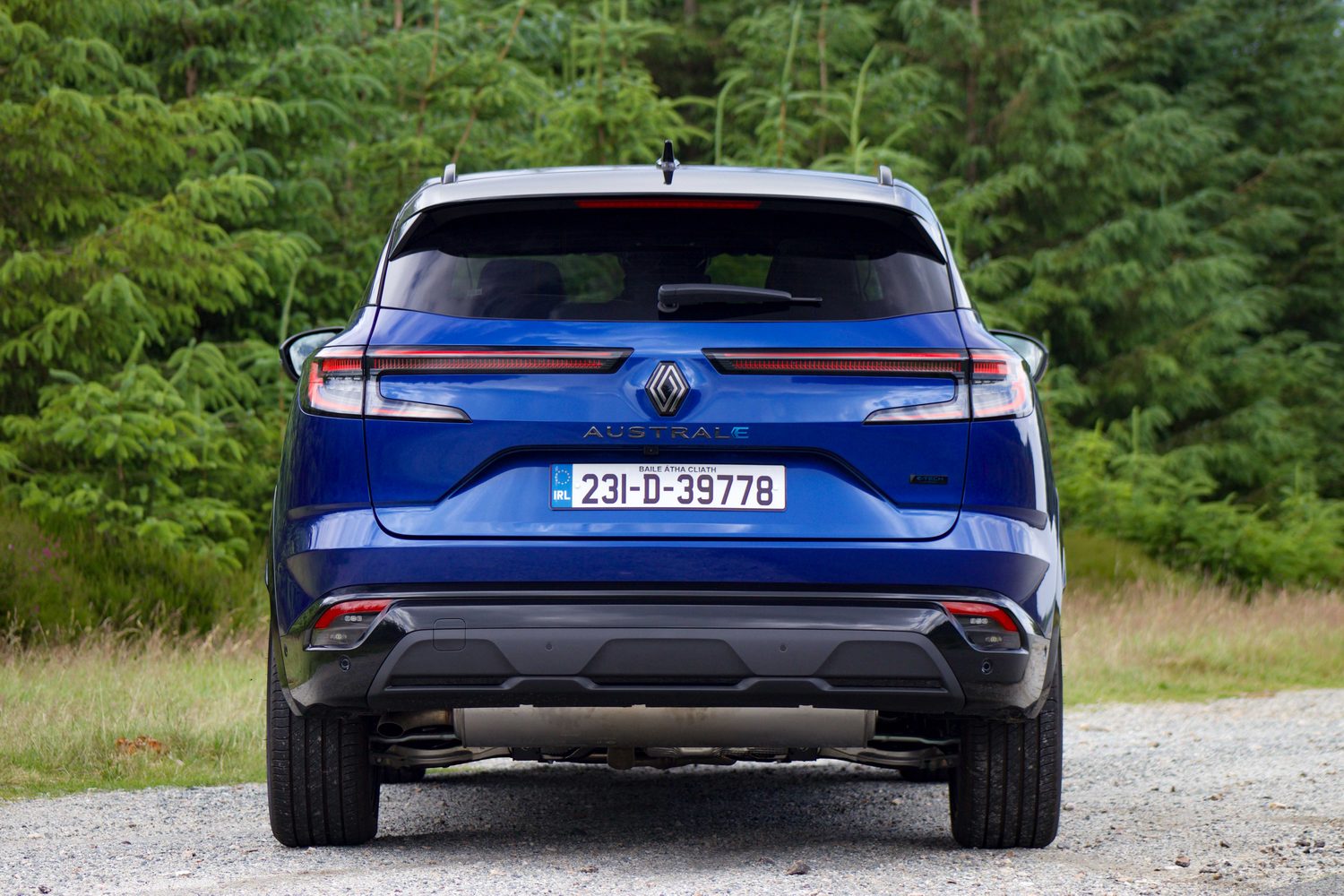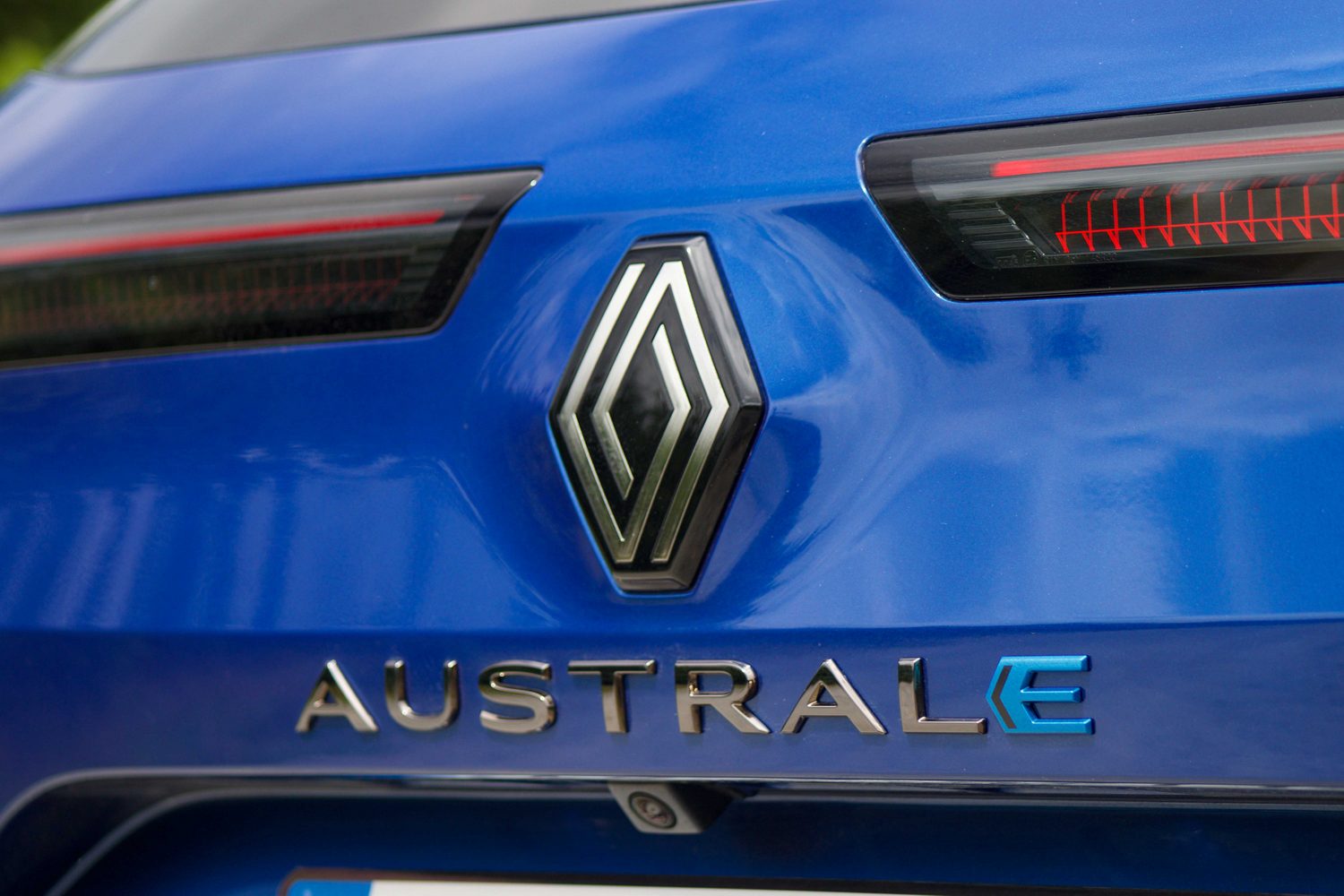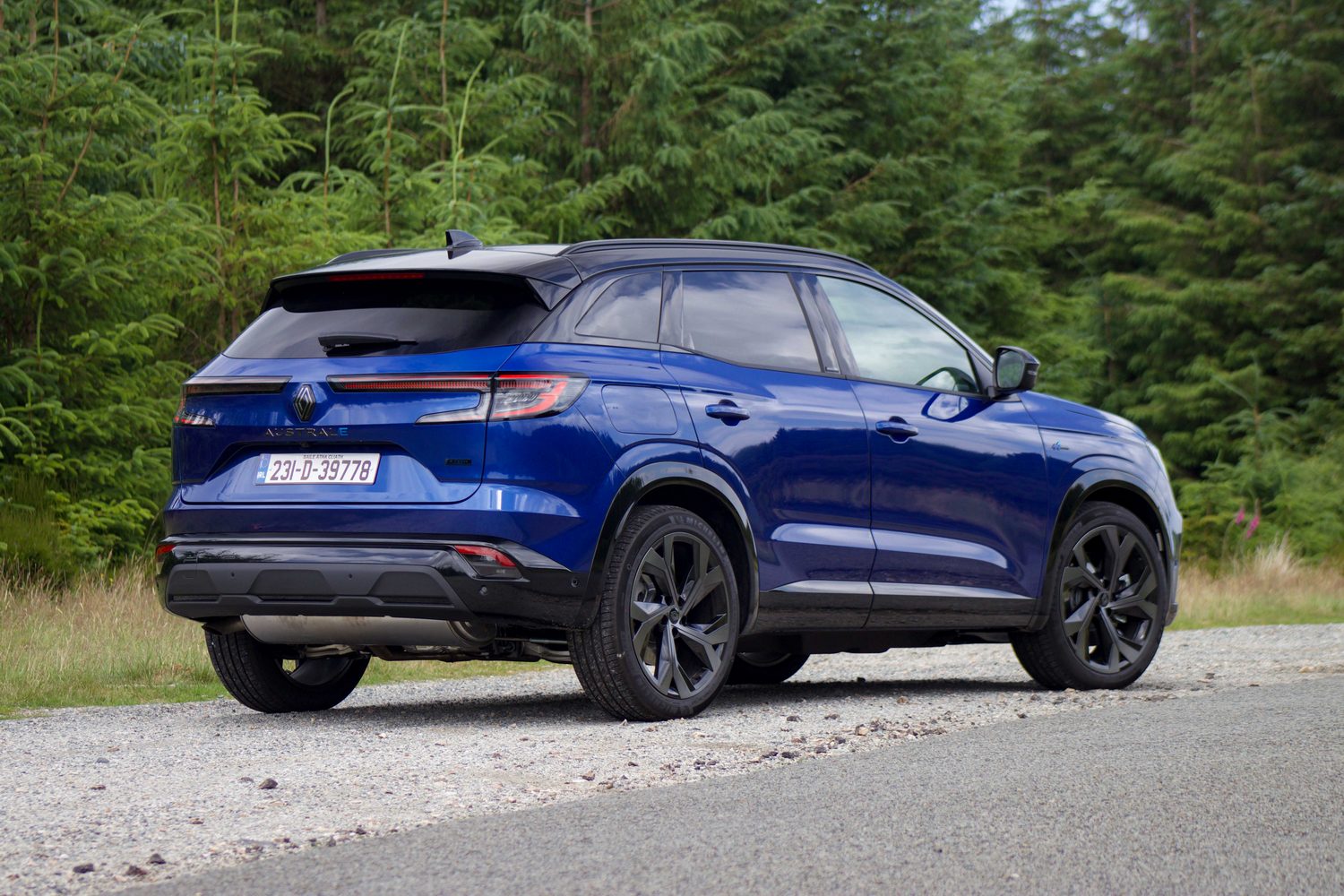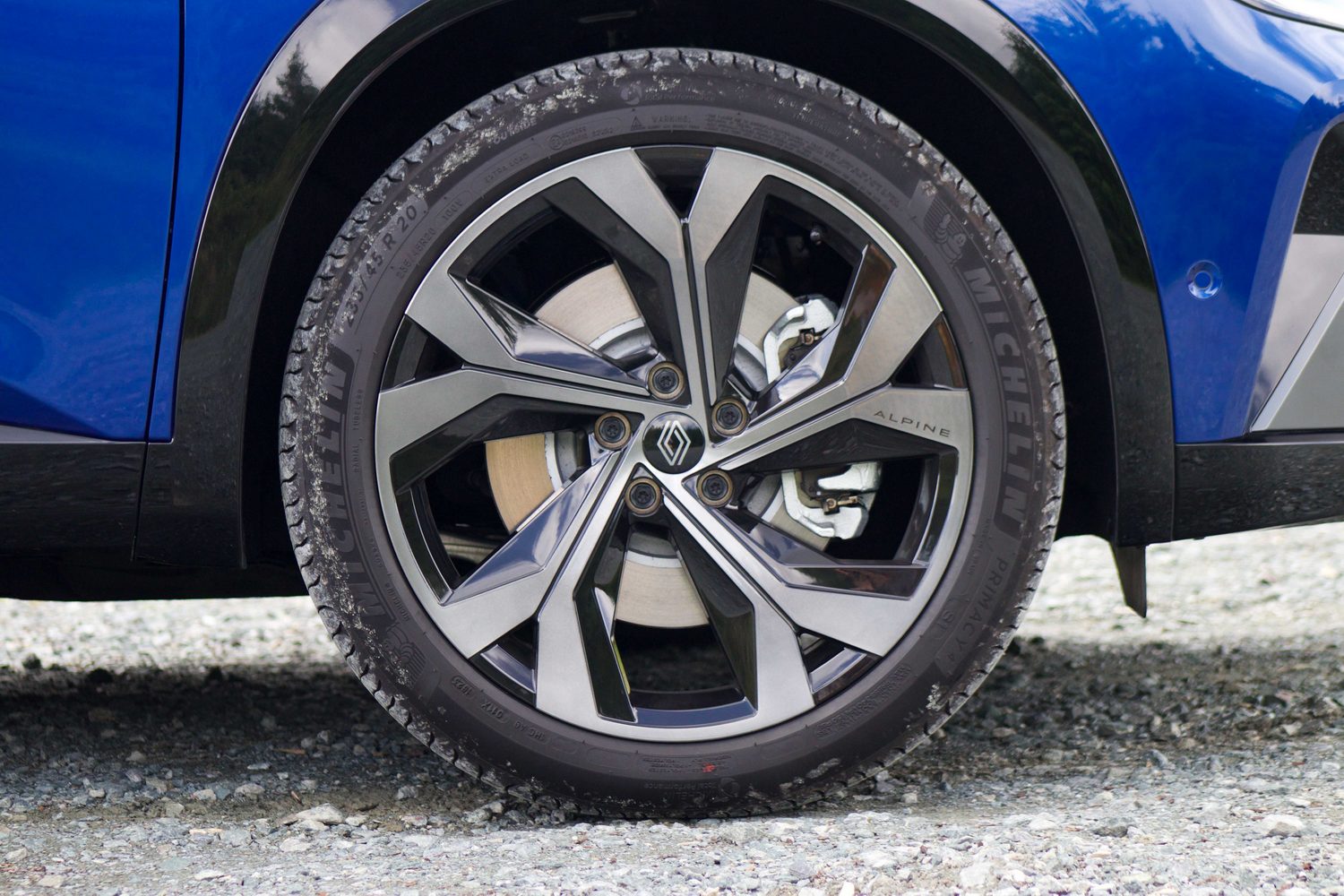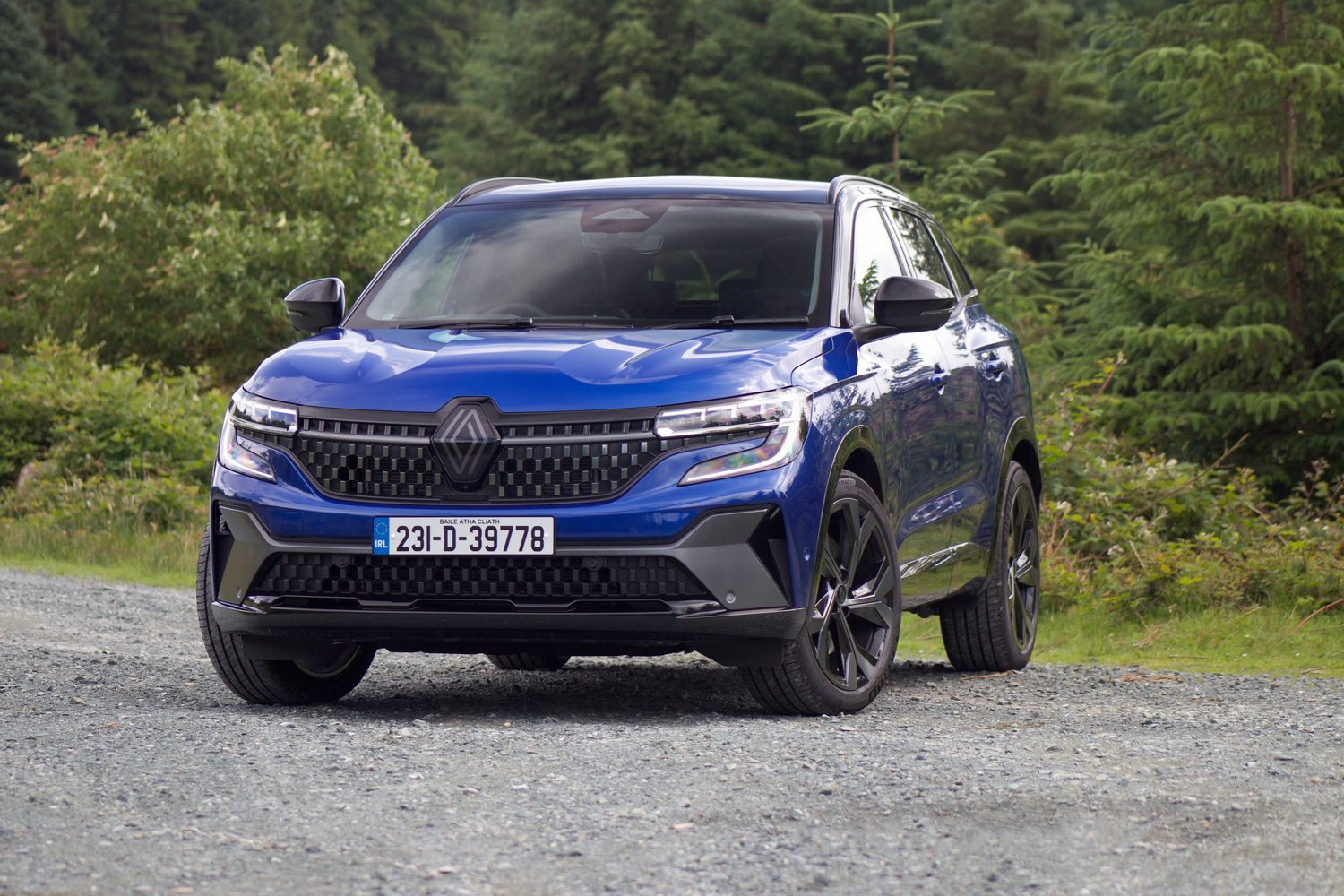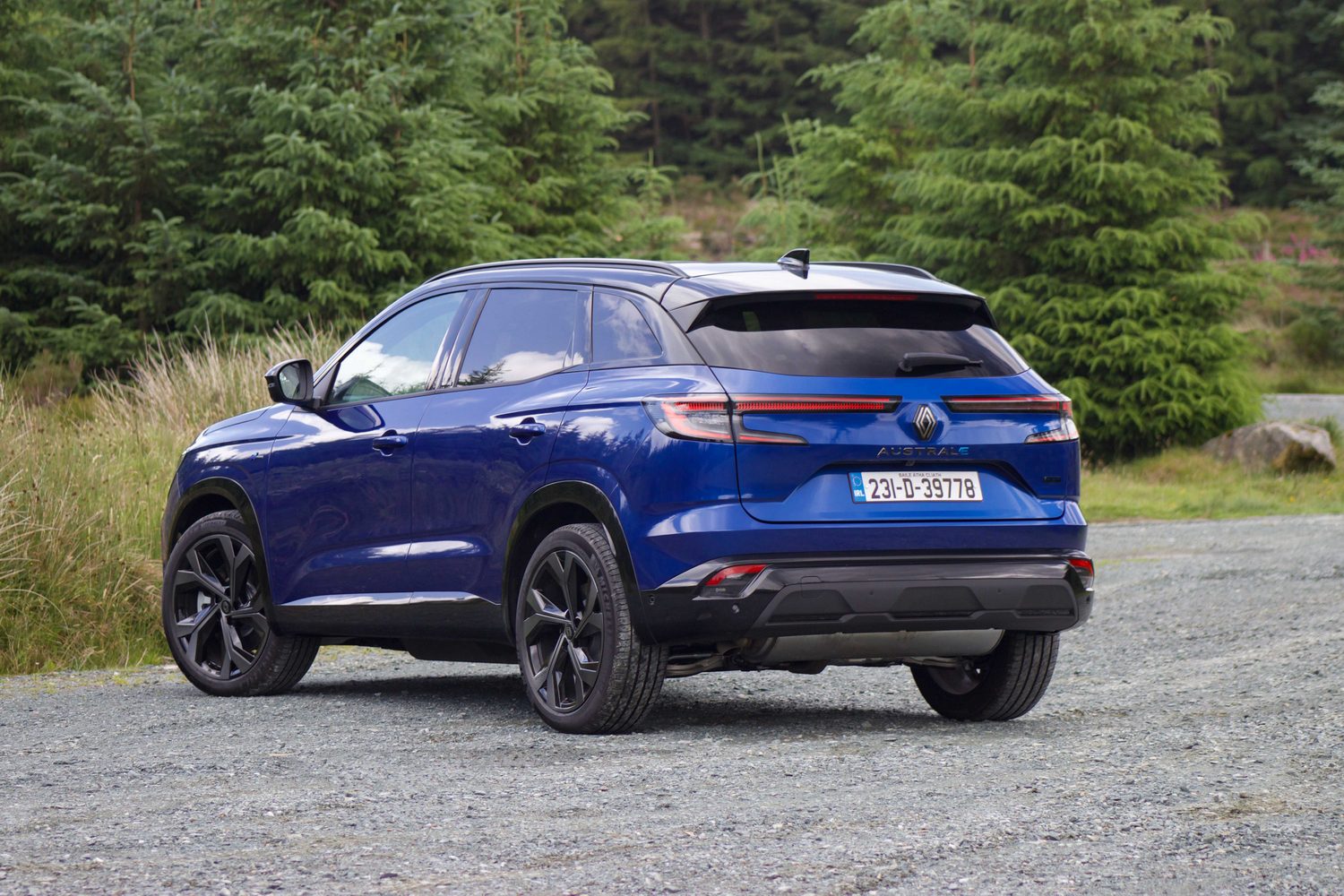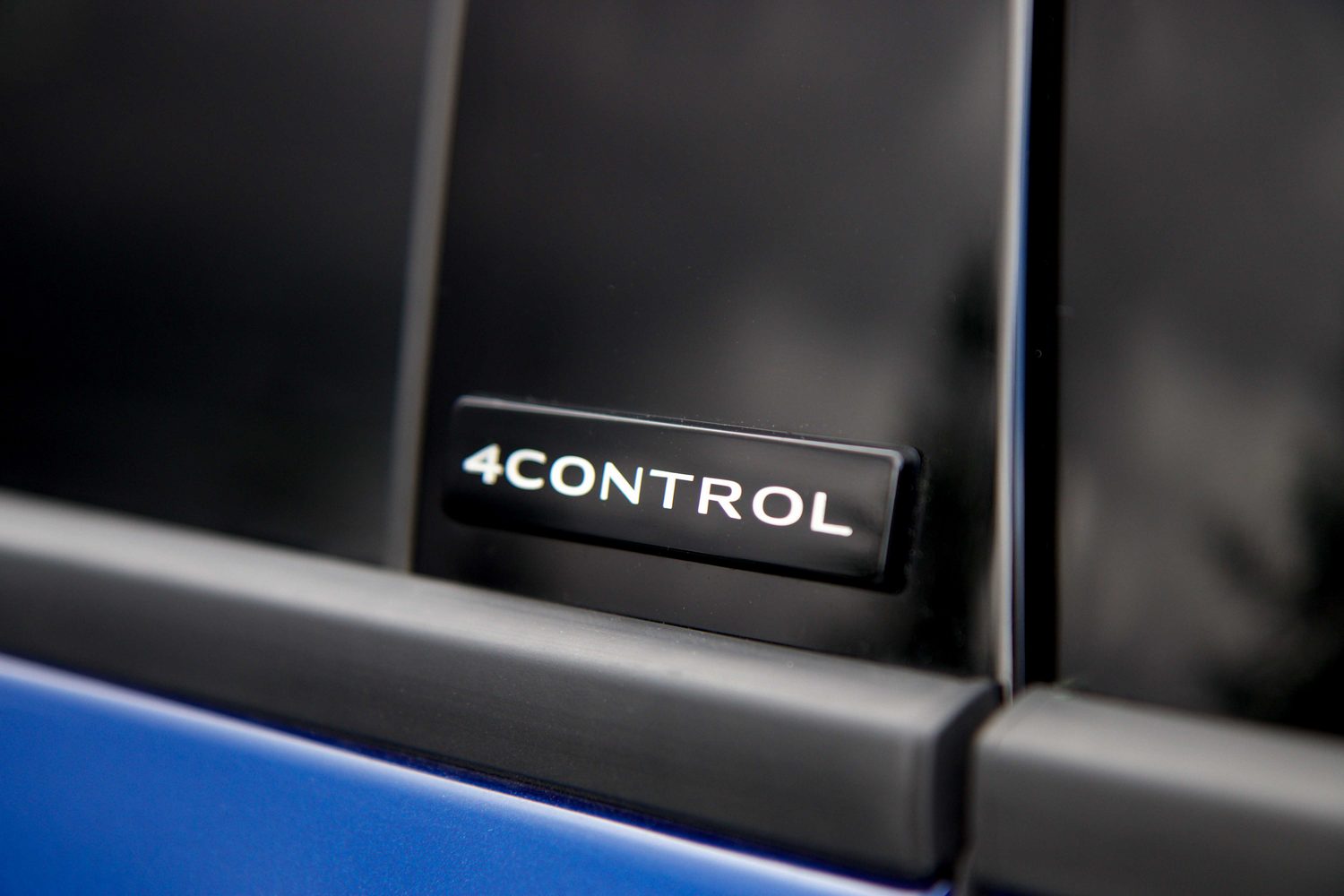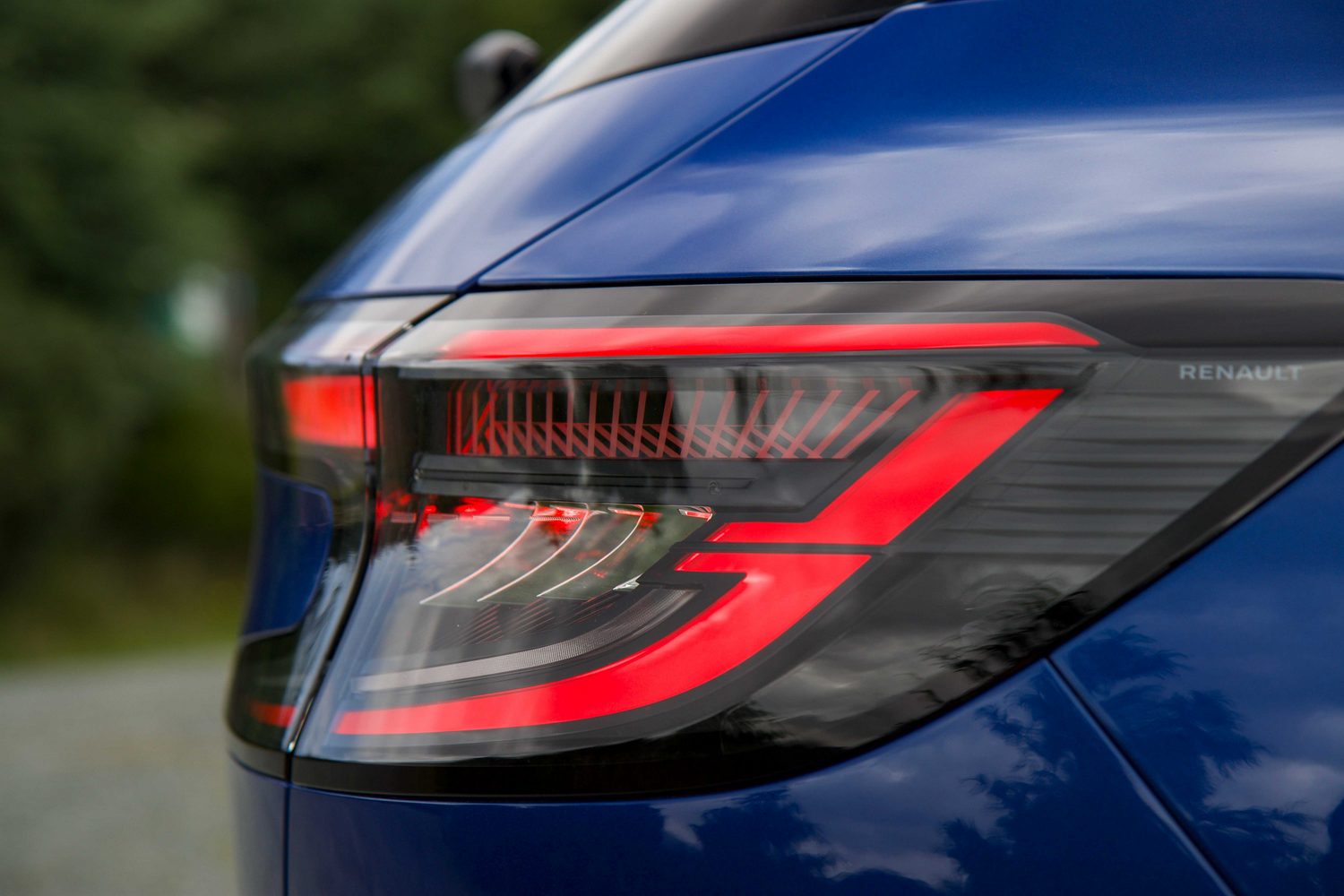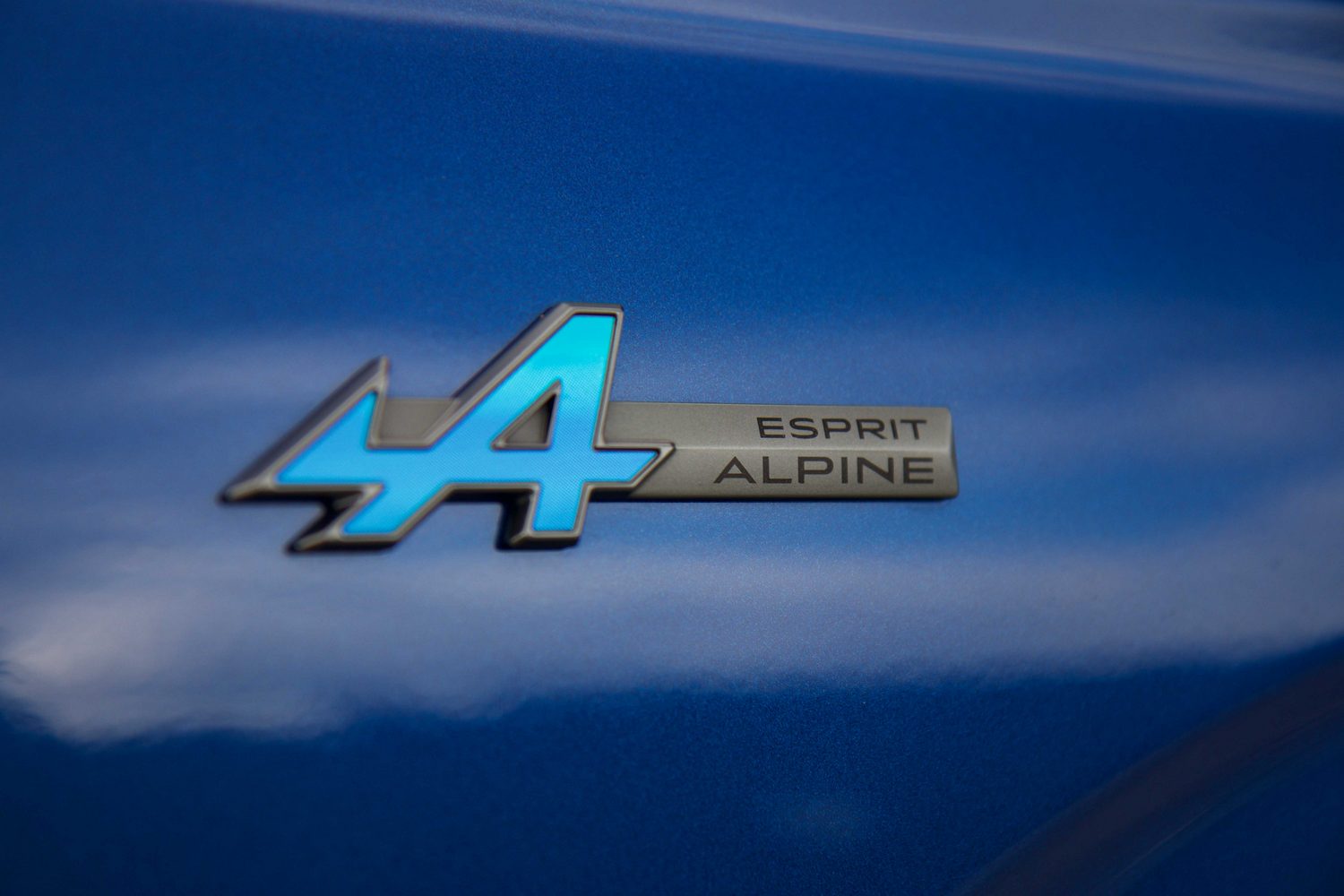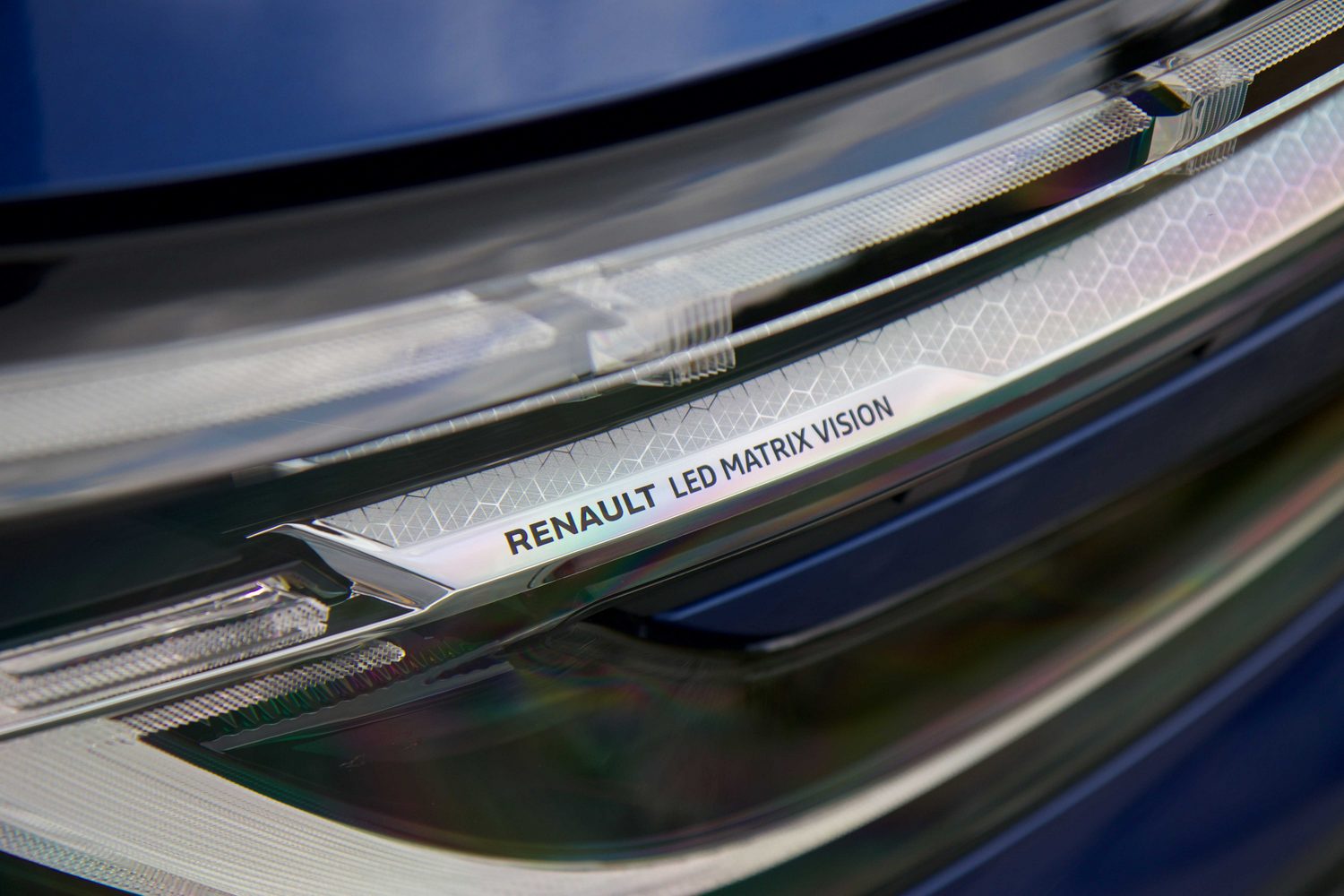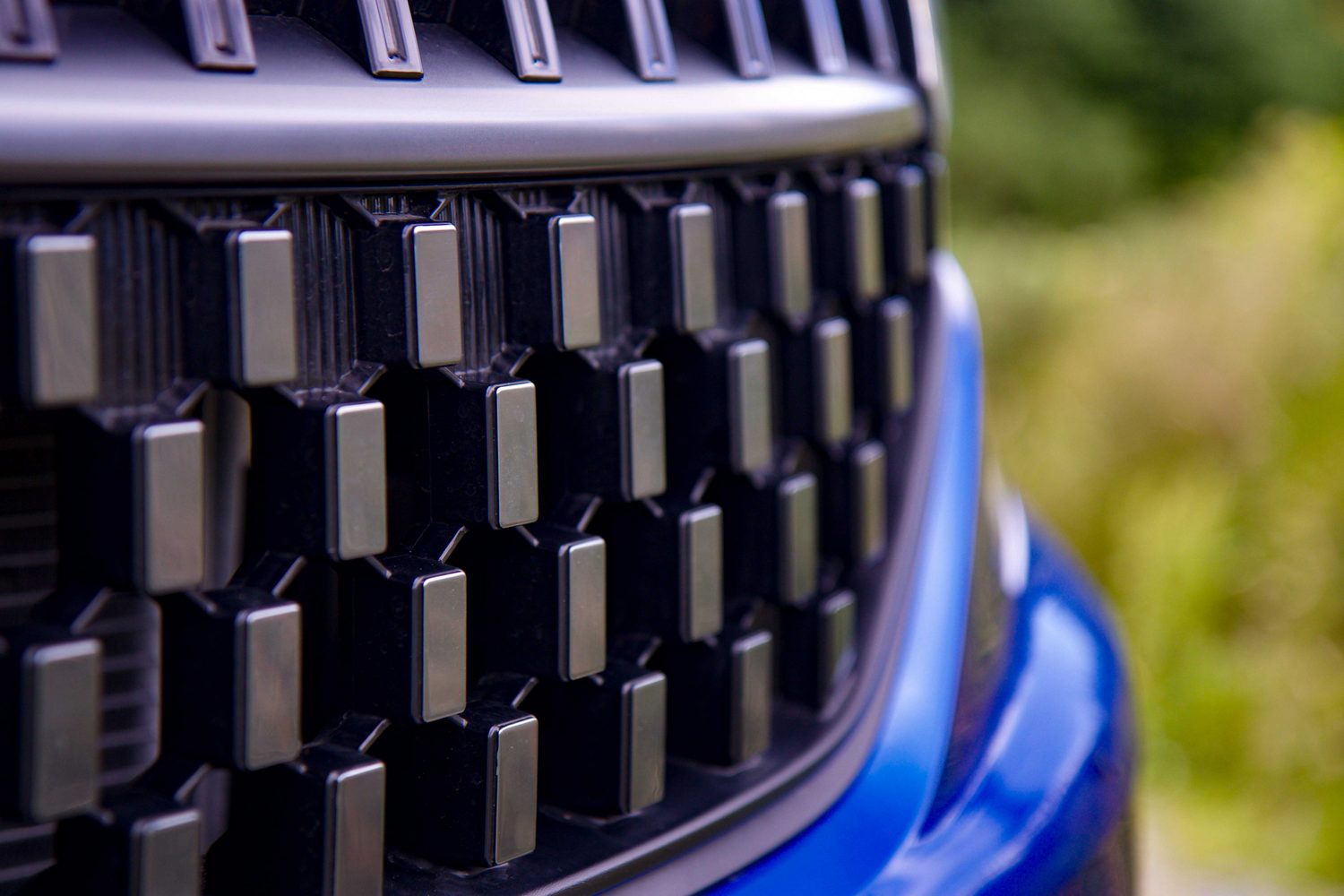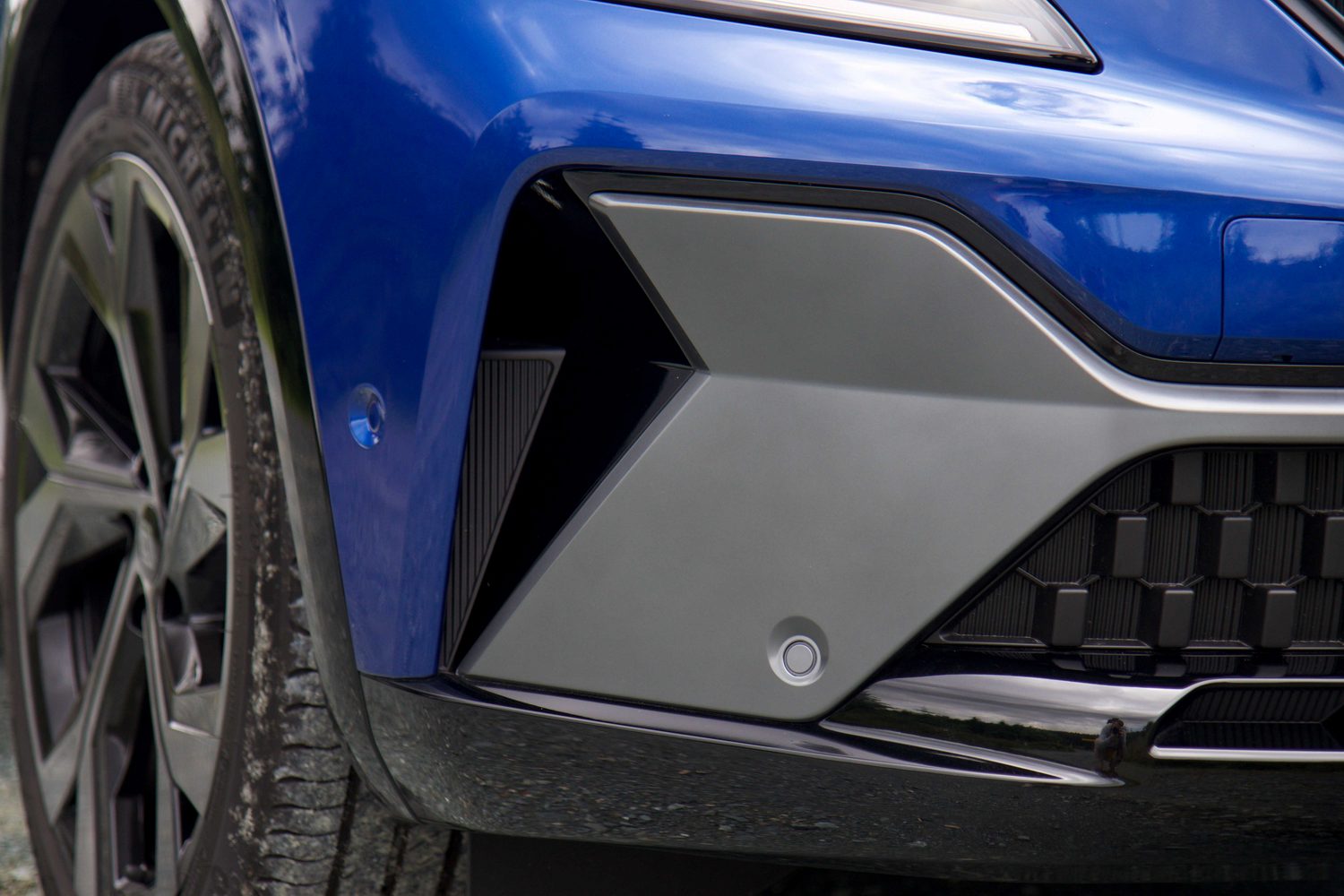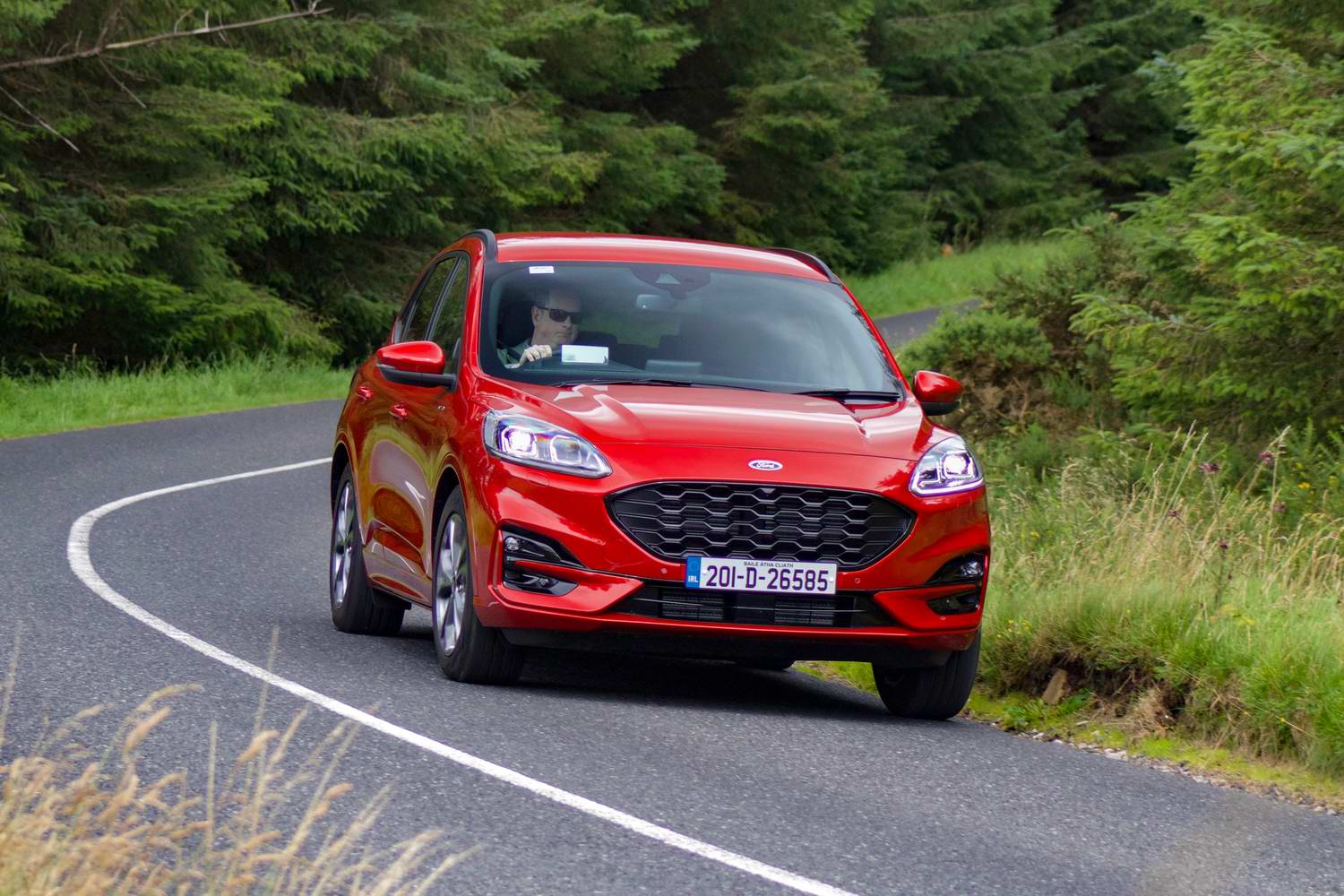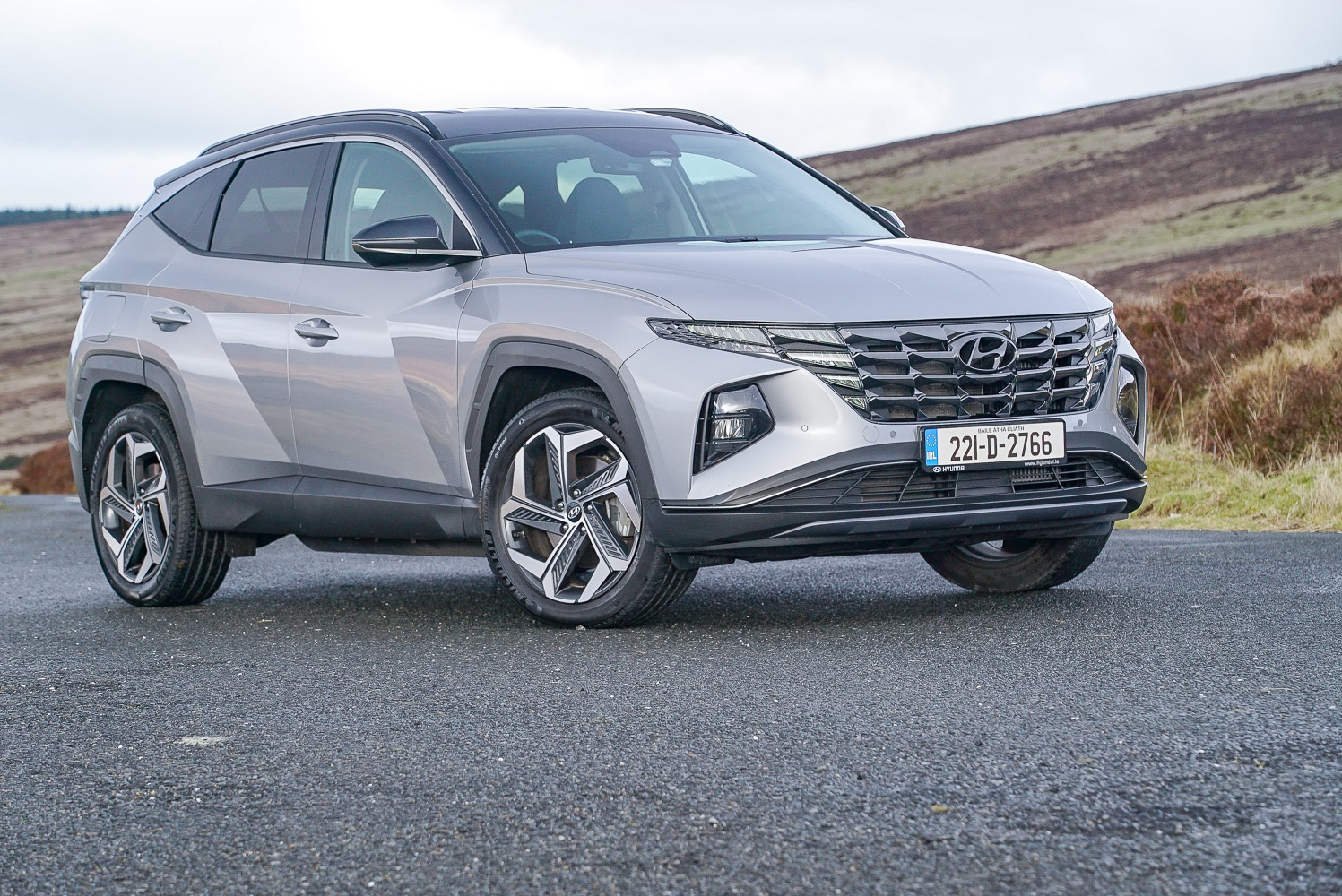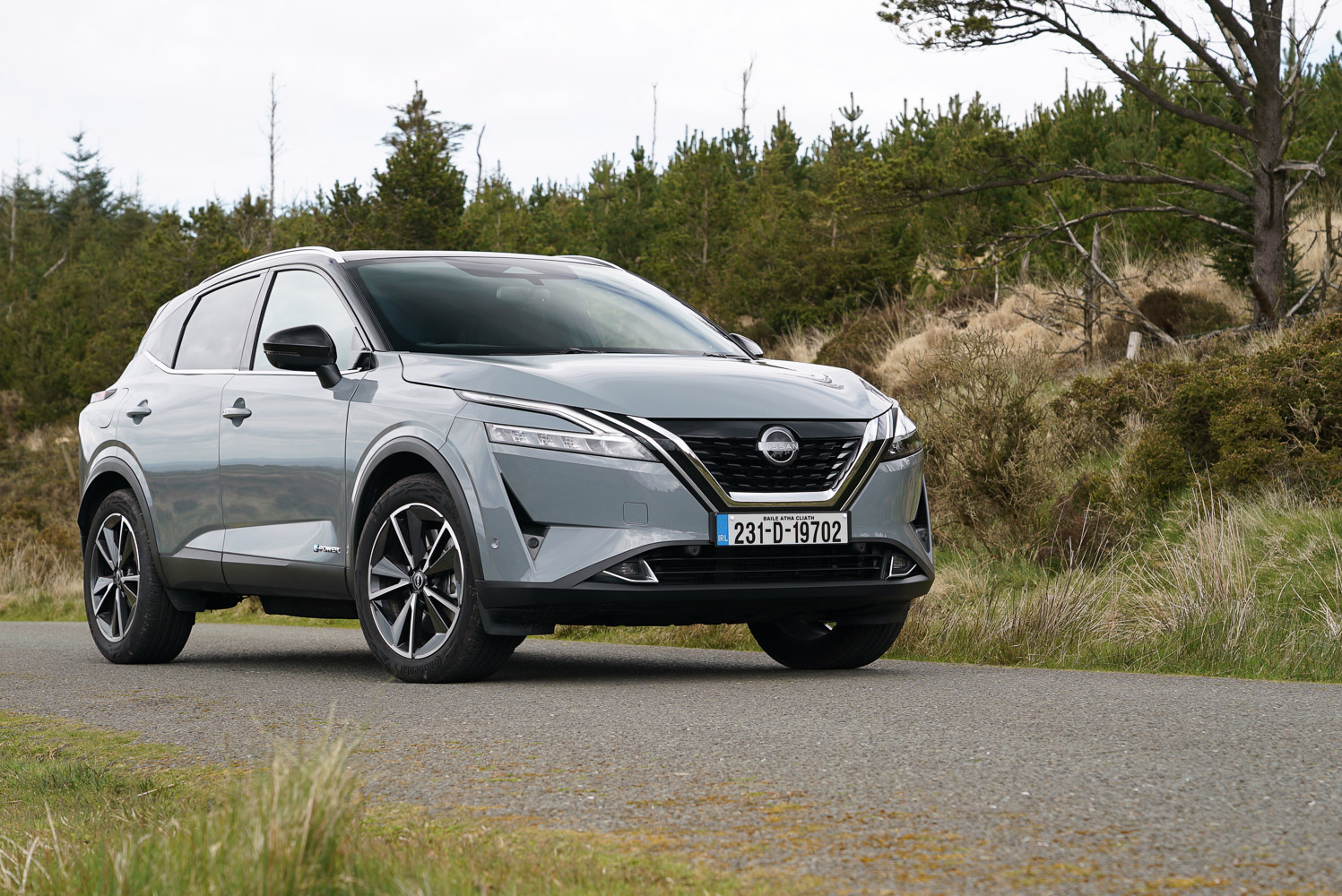Renault Austral overview
This is the Renault Austral, and it's a hybrid-only crossover SUV which immediately looks more sophisticated, inside and out, than the old Kadjar. For that matter, it looks more upmarket than Renault's other offering in this crossover space, the coupe-roofed Arkana. The Austral is a really handsome car, perhaps less immediately striking than the likes of the Hyundai Tucson or the Kia Sportage, but with a depth of well-judged styling that makes the Korean cars look a touch over-done. The 'Iron Blue' paintwork of our test car, with its contrasting black roof and the bodywork add-ons of the Esprit Alpine trim level doubtless help.
So, is the Austral good enough, and sophisticated enough, to live up to a starting price tag north of €45,000 and to take on its talented competition?
The Renault Austral model range
The Austral is sold in Ireland with a three-tier model structure, all built around - for the moment - a single 200hp full-hybrid engine option which has CO2 emissions starting from 105g/km. The entry-level model is the Techno, which has prices starting from €45,295. Standard equipment includes 19-inch alloy wheels, a head-up display projecting your instruments and navigation directions onto the windscreen, and front and rear park assist. Other equipment includes Matrix LED headlights, 'keycard' hands-free entry and walk-away locking, a big 12.3-inch central touchscreen, another big 12.3-inch driver's instrument panel display, the Arkamys audio system, a leather-wrapped steering wheel, four selectable driving modes, a rear-view camera, cruise control with speed limiter, and ambient cabin lighting.
Next up is the €47,795 Techno Esprit Alpine (Renault is trying to sprinkle a little of the magic fairy dust from its Alpine sports car and racing brand on its regular car range), which adds to the above traffic sign recognition with speed alert, lane change warning, adaptive cruise control, an electric tailgate, an electrically adjusted driver's seat with massage function, heated front seats and steering wheel, 20-inch alloy wheels, aluminium pedals and a suede Alcantara insert for the steering wheel.
Finally, and at the top of the line-up, is the Iconic Esprit Alpine, which costs €52,295 and comes with a 360-degree parking camera, a Harmon-Kardon stereo, upgraded seat upholstery, a panoramic roof and 4Control four-wheel steering.
On the safety front, all models come with safe stopping distance warning, rear cross-traffic alert, driver attention alert, blind-spot warning, automatic emergency braking (which works in reverse too), lane departure warning, lane keeping assist and ISOFIX anchors on the outer two rear seats and another on the front passenger seat. In the Euro NCAP tests, the Austral scored a full five stars, with an 88 per cent rating for adult occupants, 83 per cent for child occupants and 69 per cent for vulnerable road user protection.
The Renault Austral interior
The Austral lifts a lot from the cabin of the all-electric Megane E-Tech Electric and is all the better for it. The software for its infotainment, running on that big 12.3-inch central portrait-style screen, is based on Google's Android operating system, so it's impressively smooth, fast and easy to use. True, there are some functions and menu items which are homed in places you wouldn't expect them to be, and which take some time to locate, but to be fair to Renault that's par for the course.
What works really well - mostly - is the embedded Google Maps navigation system. You can log into this with your own Google ID, and it's as fast, accurate and useful as you'd expect, especially when you call up the navigation screen on the big driver's display.
The driver's display is equally good, although the primary speed readout can sometimes feel a bit shoved off to one side of the screen - that's less of an issue given that the head-up display is standard. The steering column is a little cluttered on one side, though. On the left, there's a column stalk that controls your lights and indicators, but on the right-hand side, there are stalks for wipers, gear selection and a pod for the fingertip stereo controls. You do get used to it, but it's a potential ergonomic minefield for your first few days with the car.
Major kudos are due to Renault though for sticking with proper physical buttons for the heating and air conditioning system, and better yet they're neat, tactile and easy to reach. So, SO much better than having the controls on the screen. Our test car came with an air purification system too, which recycles the cabin air through the main filter a few times at high speed, and which provides a pleasant placebo effect if nothing else.
On the centre console there are two large storage areas. The one in front includes two well-sized cupholders as well as a pair of USB-C sockets. The one further back is simply a storage box. Both share a sliding cover, which is also home to the wireless phone charger, and which is controlled by a large handle shaped almost like the throttle control of an airliner. This cover slides back and forth, opening one storage area while covering up the other. It's somewhat over-engineered for its task, but does feel satisfyingly tactile to use. The big handle also doubles as an armrest when you're using the touchscreen, but if you've got tall bottles or cups in the cupholders, it can snag on those, making it difficult to access the other storage area. Behind that, there's yet another deep storage box under a butterfly style armrest, and if you combine that with the well-sized door bins, and the decent glovebox, you get a cabin that's very practical.
The Iconic Esprit Alpine trim definitely helps. The soft materials used on the seats feel much more luxurious than the default leather, and the use of soft fabric on sections of the dashboard help to lift the ambience a notch.
In the back, space is good. It's maybe not quite as cavernous as the biggest cars in the class, but legroom and headroom are generous, even with the optional glass roof and its attendant sunshade. There's a bit of a transmission hump in the rear floor, but this apart there's just enough width in the centre rear seat for an adult to squeeze in for a short journey. The view out is slightly dim, thanks to the high-backed front seats and the rear privacy glass, but that optional glass roof lets in lots of very welcome extra light. Rear seat passengers get their own central armrest, USB-C sockets and usefully-sized door bins.
The boot is something of a moveable feast because the rear seats are too. They slide back and forth, and if you're prepared to sacrifice all but a sliver of rear legroom, you can expand the boot to a very useful 555 litres (more space than you get in an Audi Q5), but if you actually like the people sitting in the back, it's going to be a smaller, but still decent, 430 litres. Fold the seats flat and you have 1,525 litres of cargo space.
The Renault Austral driving experience
The Austral's hybrid system dominates its driving experience. The 2kWh battery that's part of the system means you can cover an impressive amount of ground on electric power alone, especially around town. It's impressive too in that it's very economical. We couldn't quite match Renault's official 4.8 litres per 100km consumption, and one-tank range of 1,100km but we pretty easily managed 5.5 litres per 10km, and between 800-900km on a tank of unleaded.
Because of the size of that battery, it means that the 1.2-litre turbocharged three-cylinder engine can sometimes work as a range-extender, switching on to simply charge up the battery, rather than directly drive the car. When it does this, it can be surprisingly loud when cold. It rarely stays on for long in that manner, and you do become accustomed to it, but it's odd at first.
When the petrol engine is directly driving the wheels, with the battery and electric motor assisting it rather than the other way around, performance is not as brisk as that 200hp figure might have you think. In fact, it's the 0-100km/h time of 8.3 seconds that's more indicative - the Austral is brisk, but never especially quick even though both the electric motor and the 48-volt starter-generator can kick in with extra low-down torque when needed. In fact, at low speeds, the torque can kick in quite suddenly.
For the most part the Austral drives nicely, with quick and accurate steering accessed by the slightly squared-off, but exceptionally good-to-hold steering wheel. It will understeer, of course, because what else would a mid-size crossover do, but for the most part the Austral feels more engaging and characterful to drive than most of its opposition, the distantly-related Nissan Qashqai included. It also feels surprisingly rugged, being entirely unruffled by the winds and floods of recent weeks.
The 4Control rear-wheel steering really helps in tight manoeuvres, especially when trying to navigate narrow car parks, or wiggling into a small kerb-side space. On the open road, it can feel a touch odd at times, as it kicks in on slower corners, and for a millisecond it can feel as if the back-end is sliding, rally-car style. It's not, of course, and you soon get used to it. I even started to enjoy it a bit.
Our verdict on the Renault Austral
The Renault Austral is not perfect, and that's kind of why we like it. The hybrid system takes a little getting used to, but it feels more engaging and more interesting to drive than most of its rivals, and the interior is almost unquestionably the best-in-class. It is quite pricey, but it has a sense of style and sophistication about it that justifies that expense.
What do the rest of the team think?
I really like the look of the Austral, even if I wish Renault hadn't resorted to using the Alpine name as a trim level. The big wheels help augment the proportions and don't ruin the ride comfort, either. It looks more impressive than most crossovers in the sector. That carries through to the high-quality interior, which is highly practical, as Neil pointed out. It's good to drive too, once you're used to the workings of the hybrid and the (highly-useful) four-wheel-steering systems. Overall the Austral makes a good case for itself in the market as one of the more premium options.
Shane O' Donoghue - Editor

